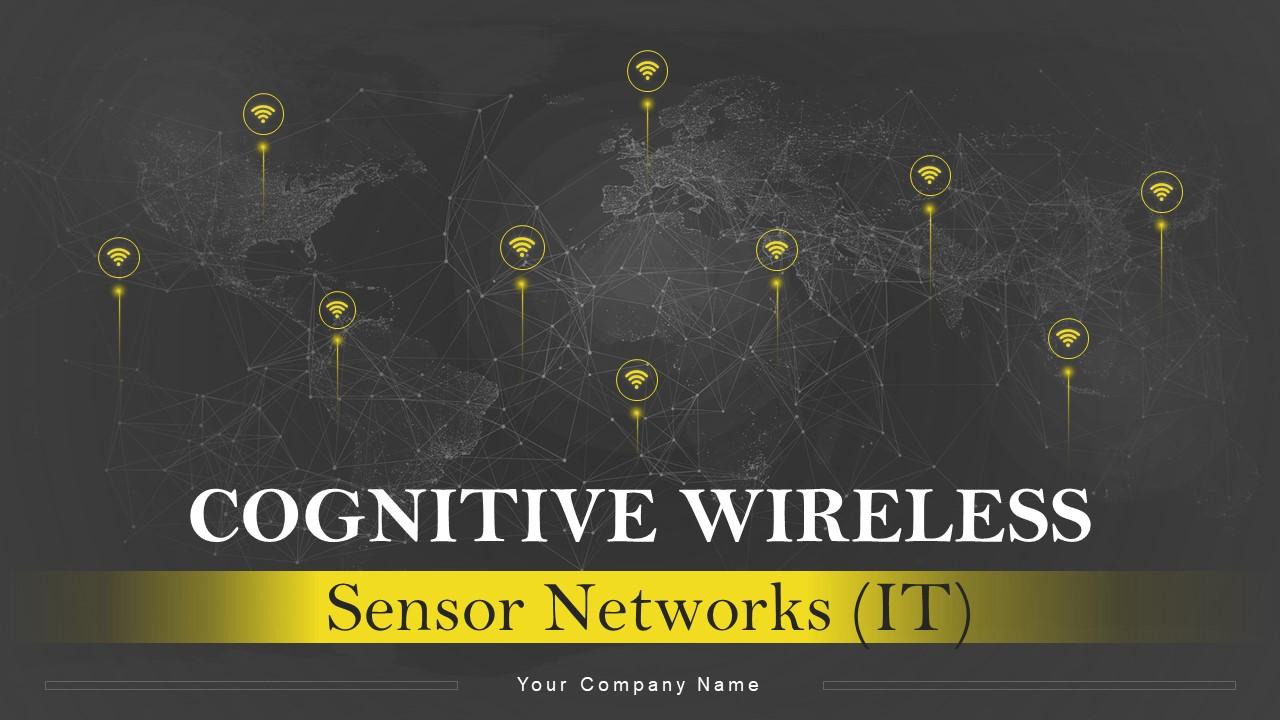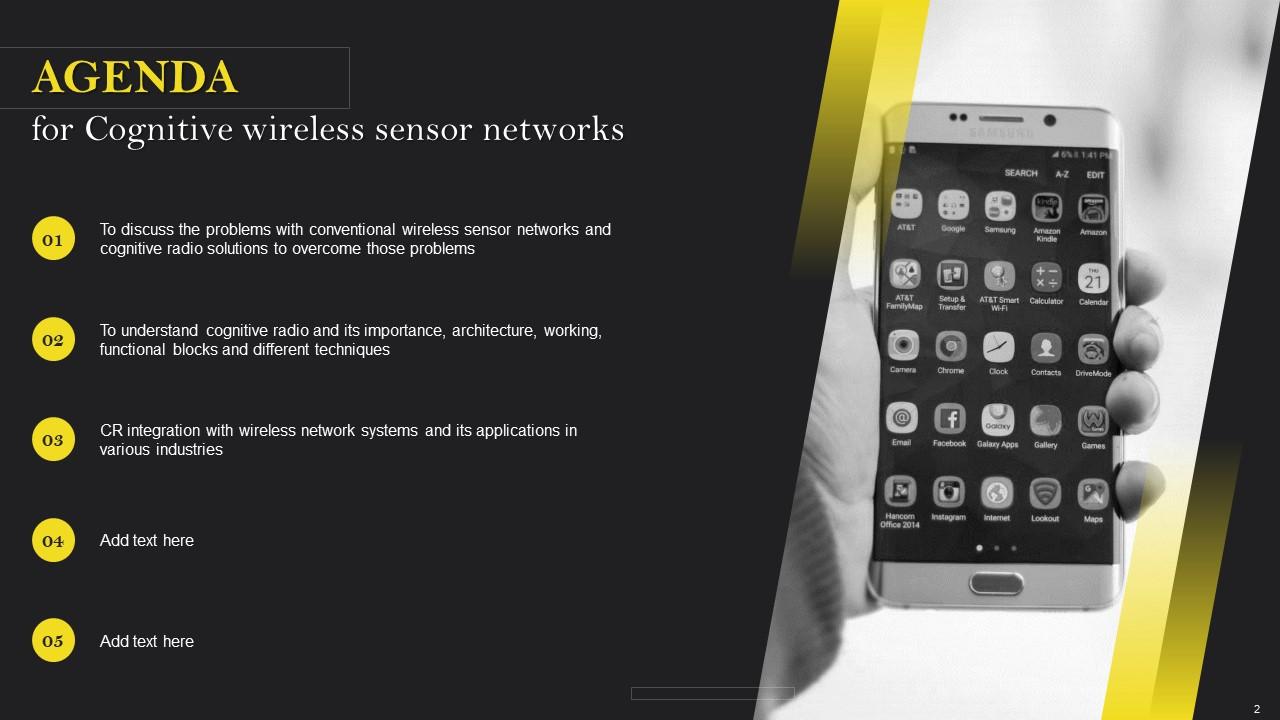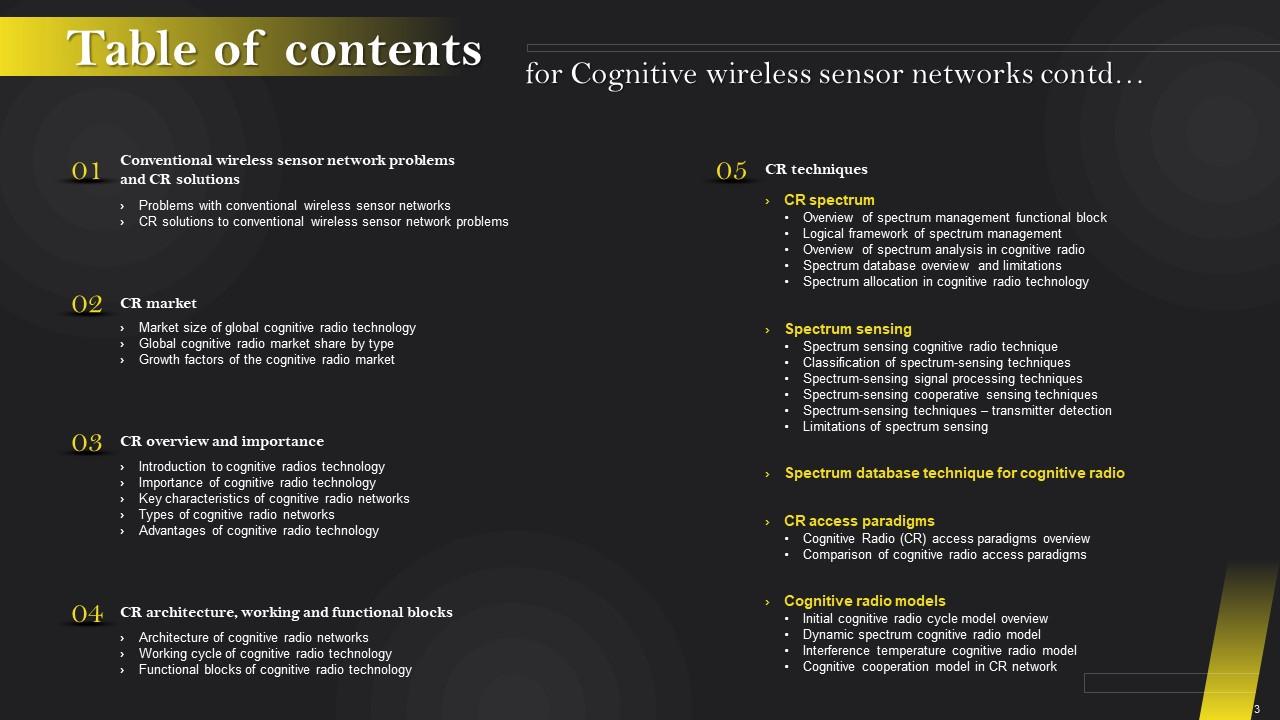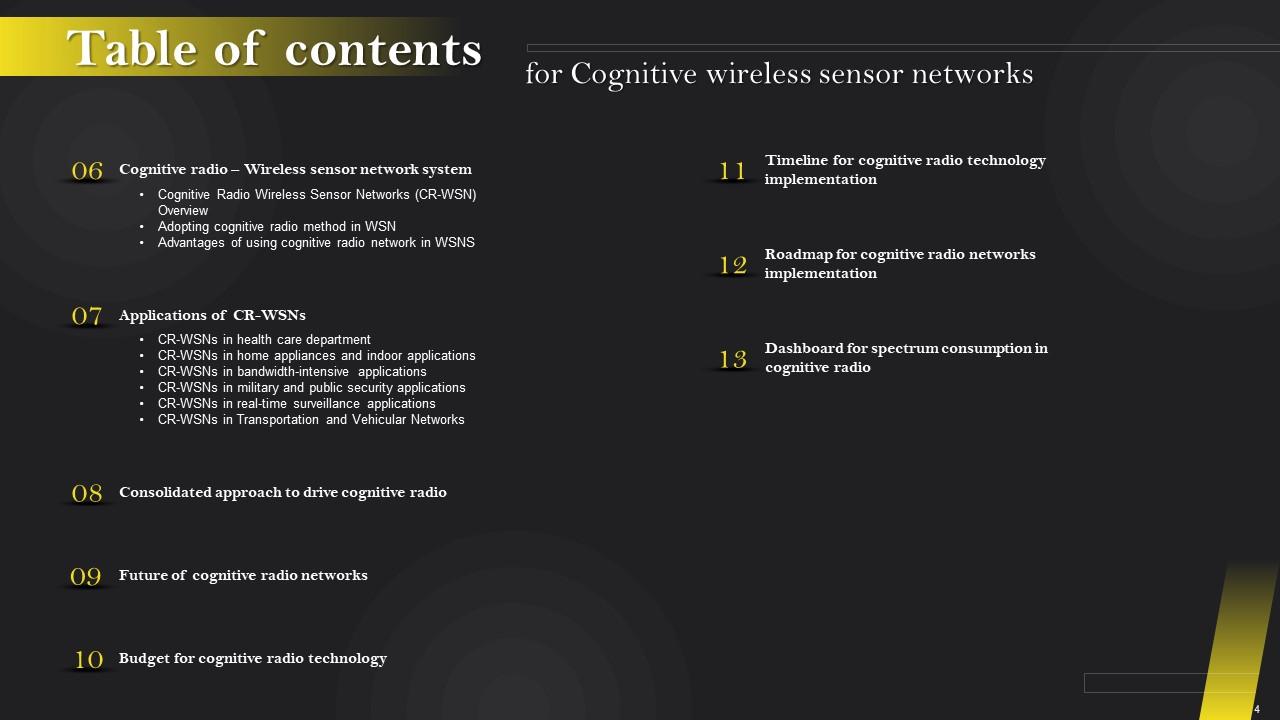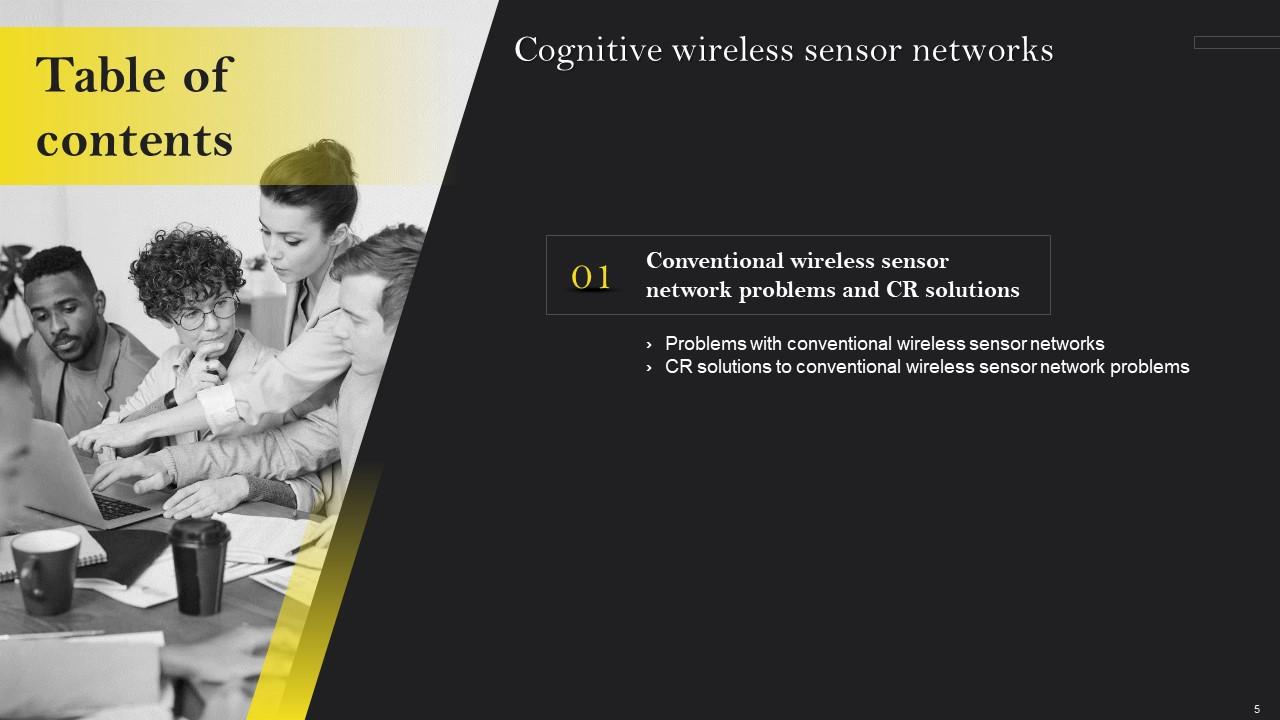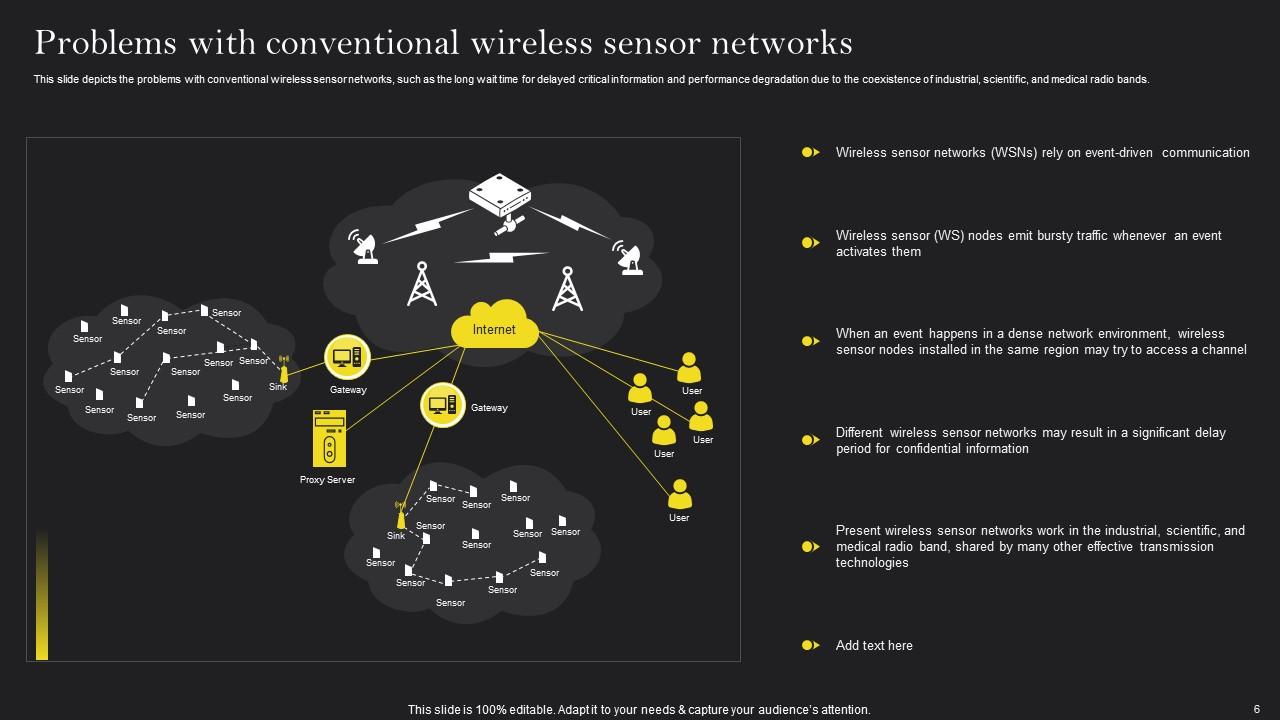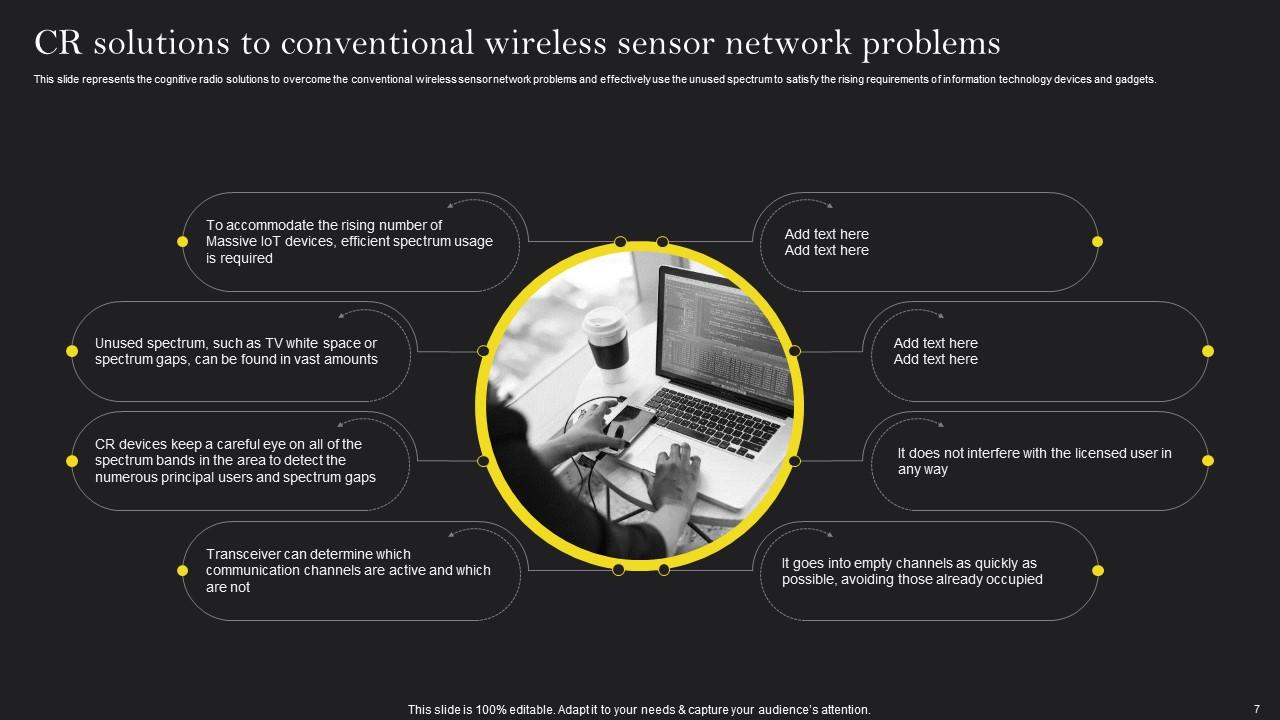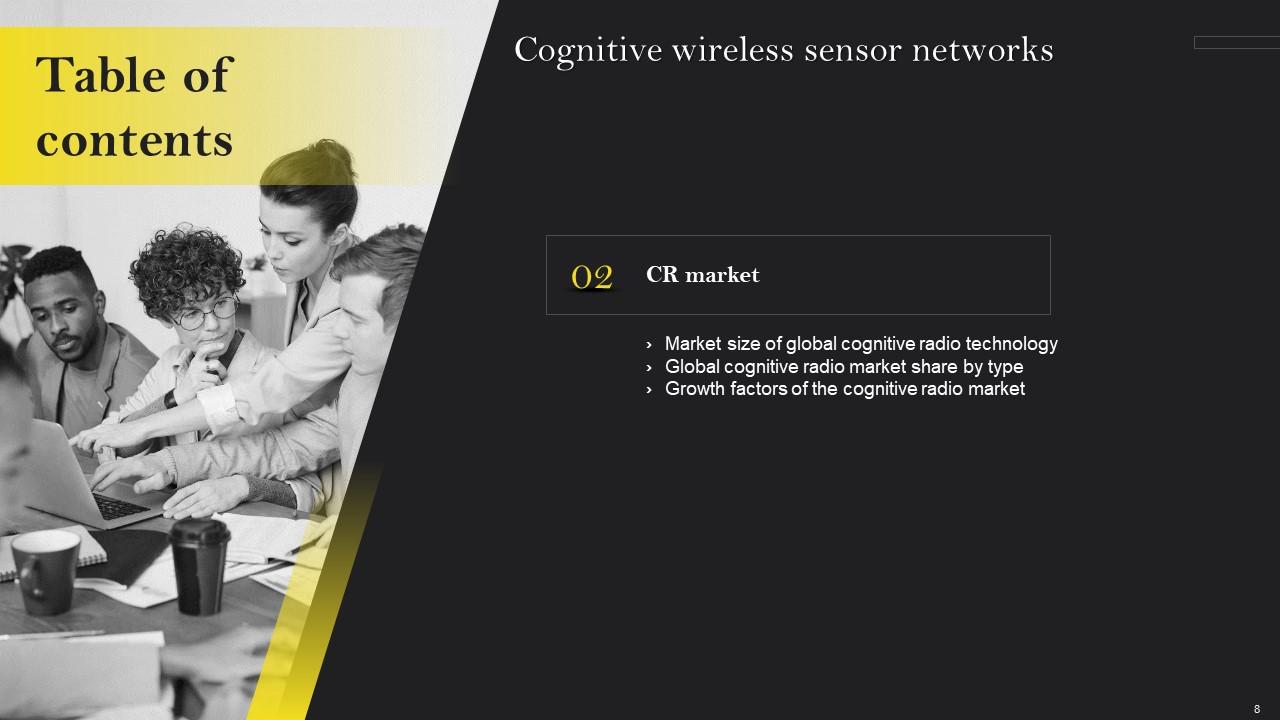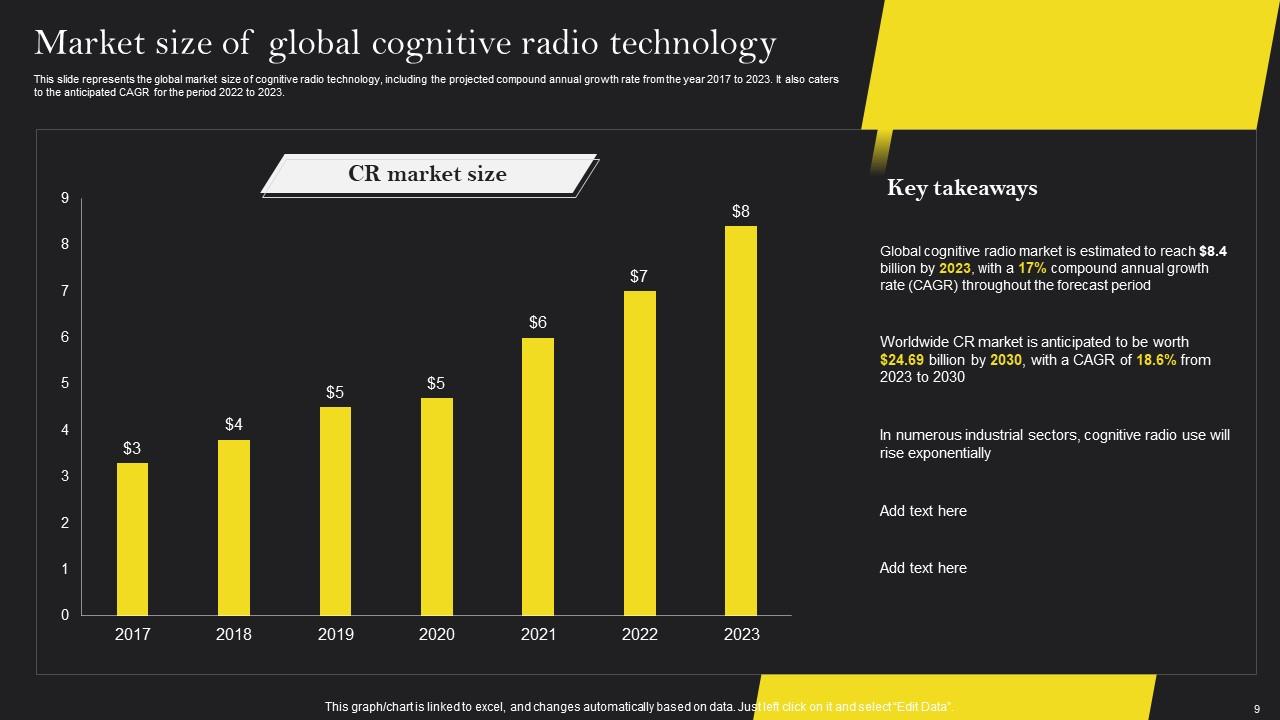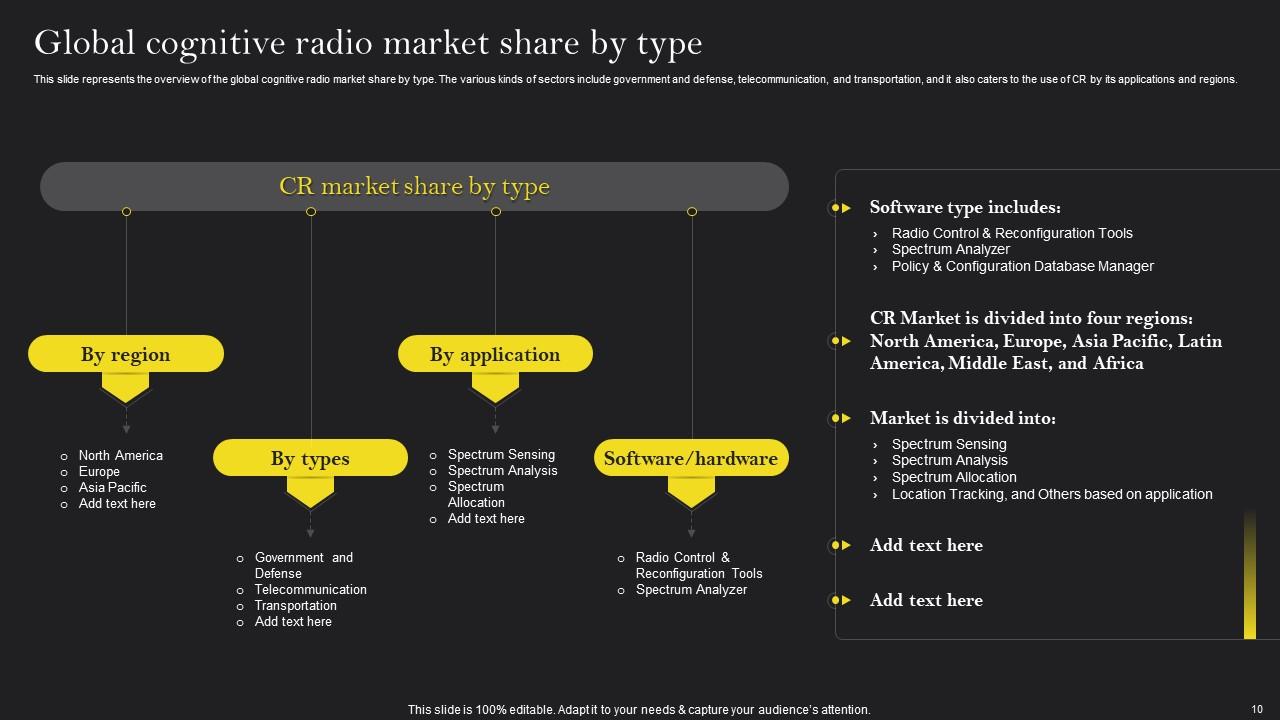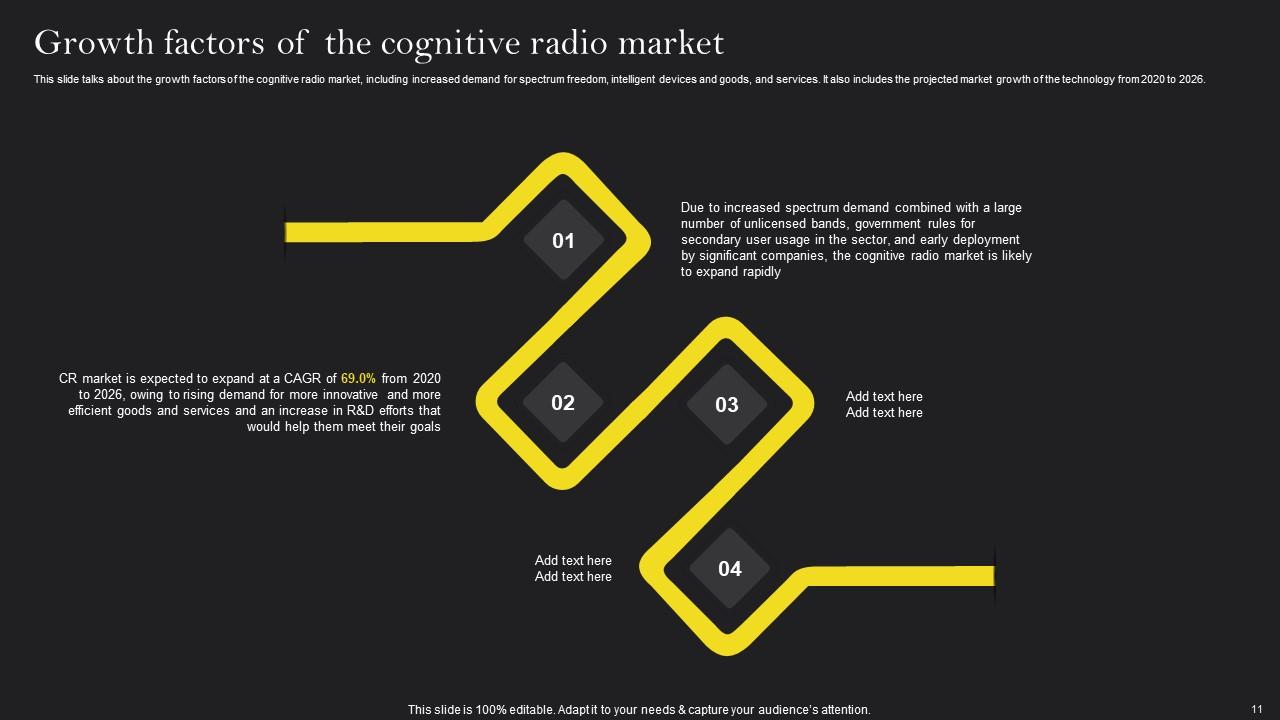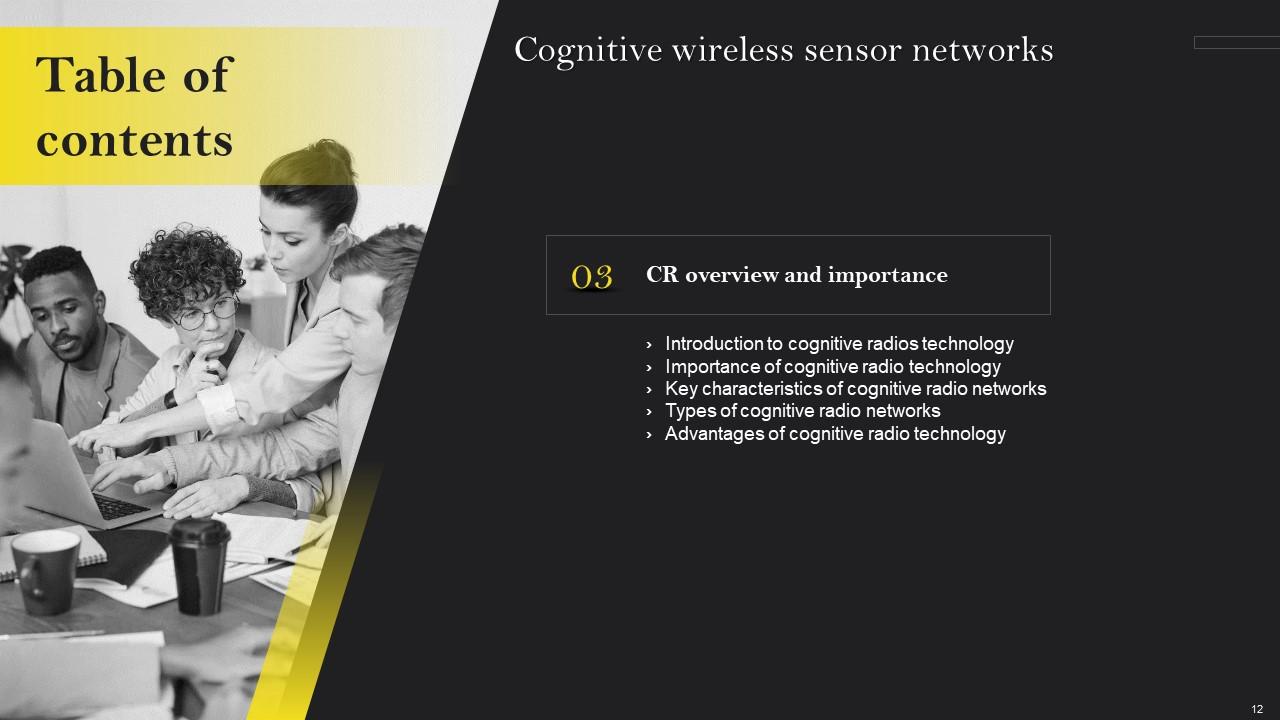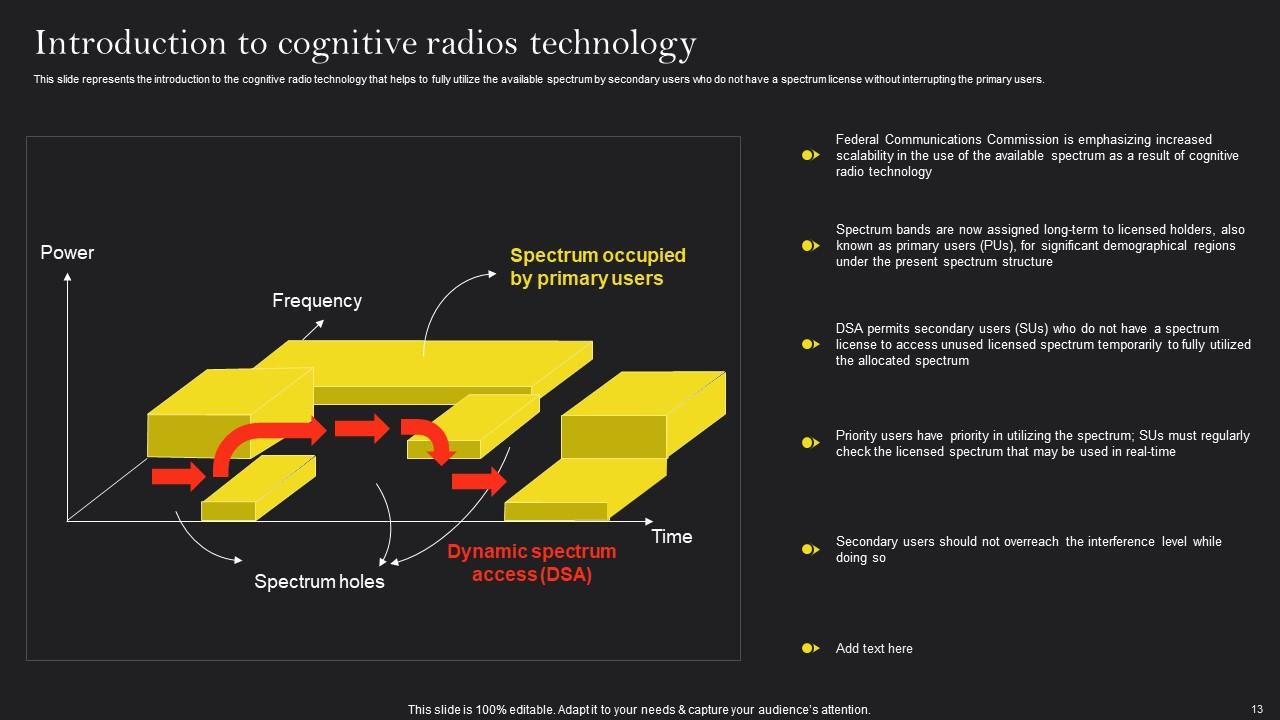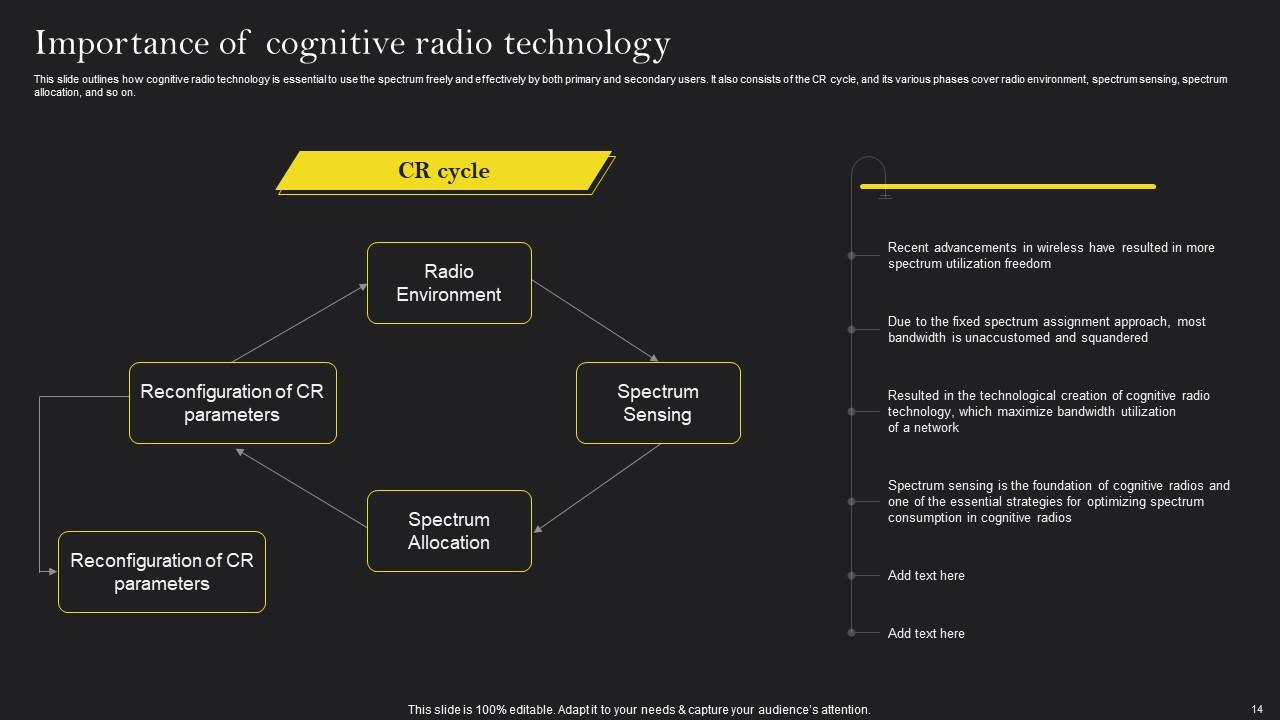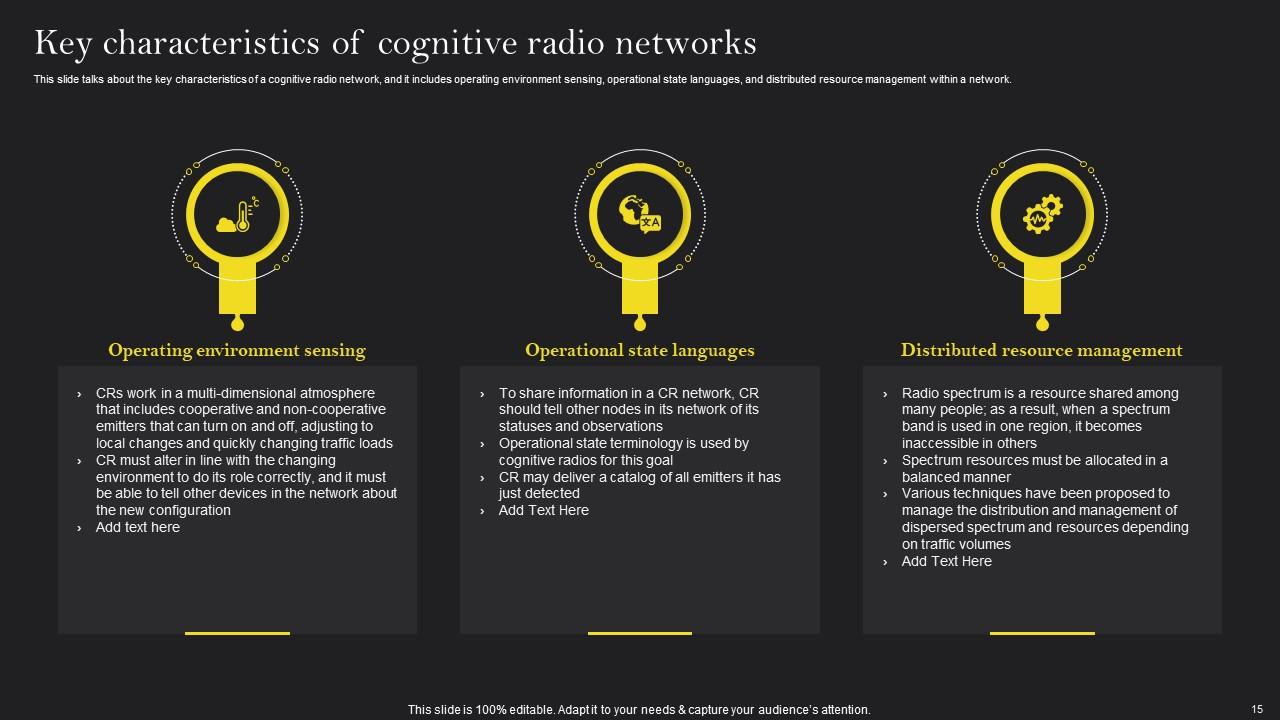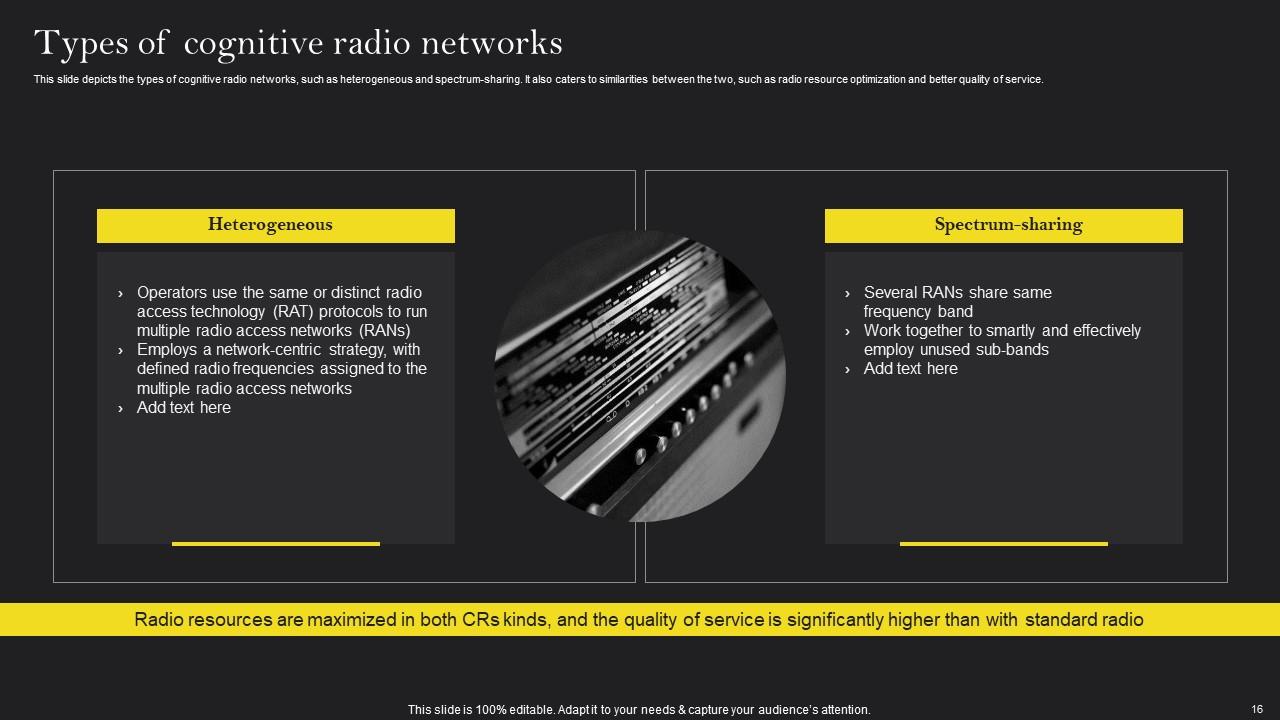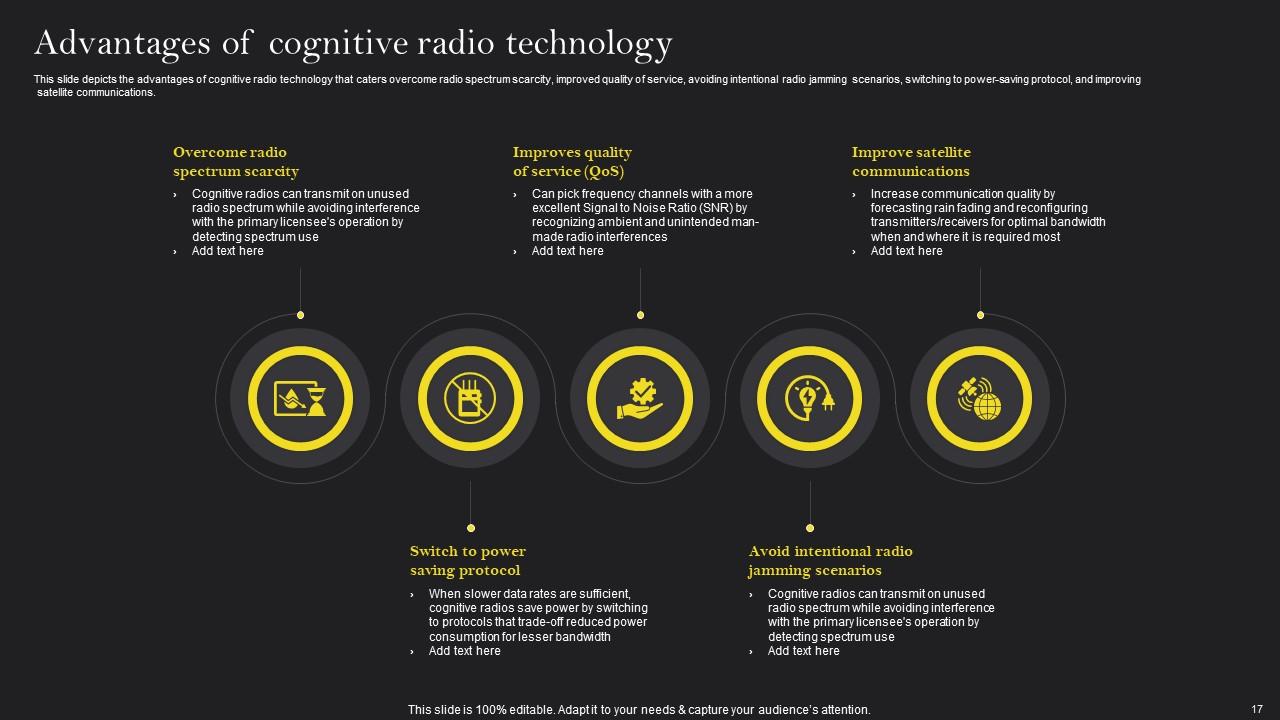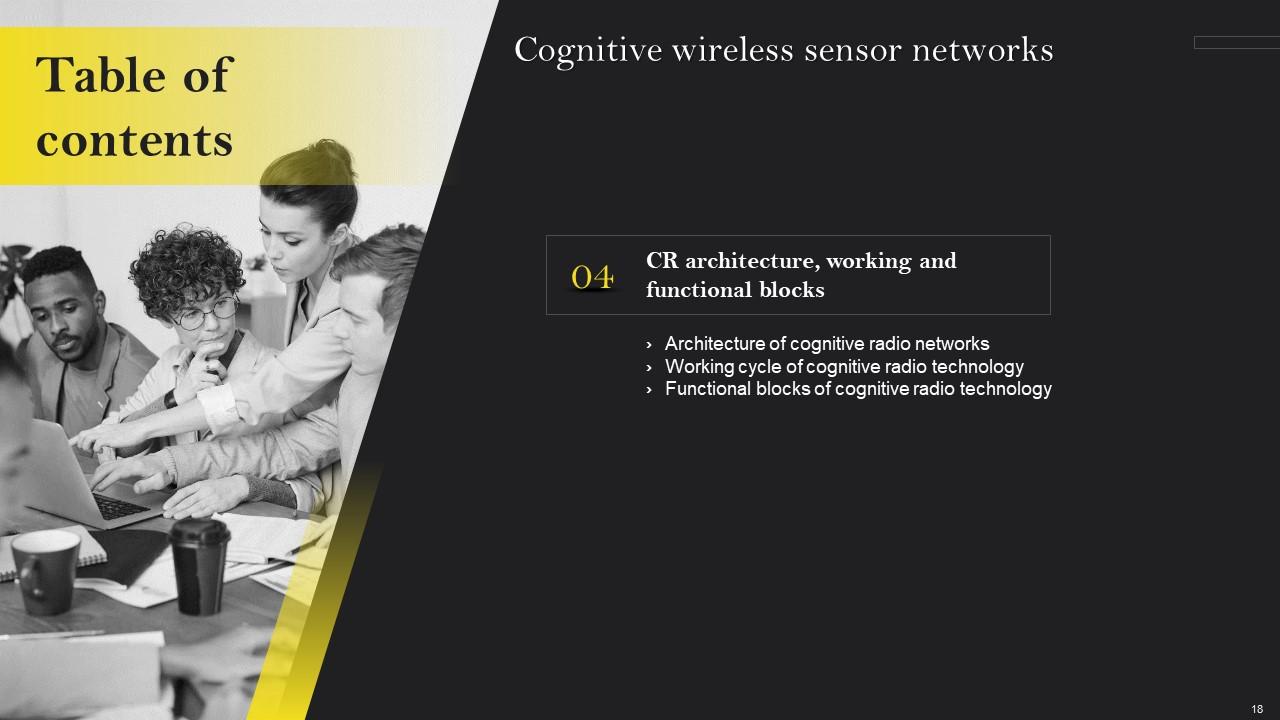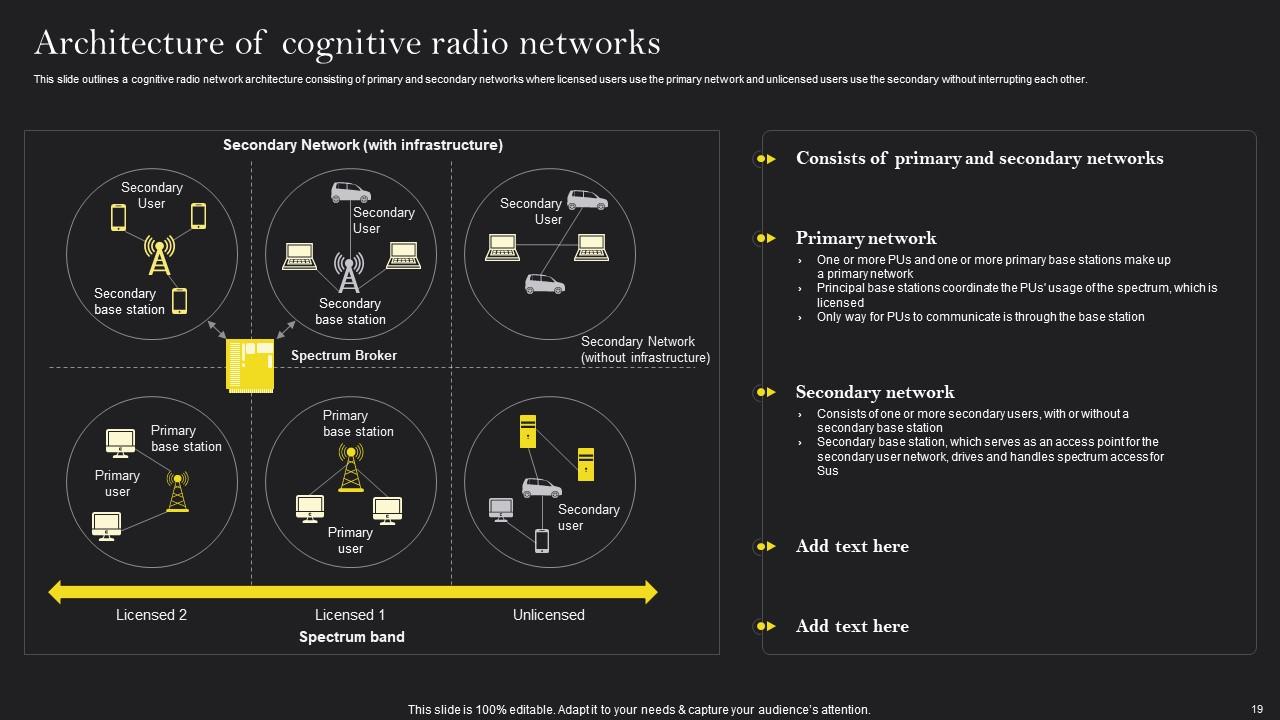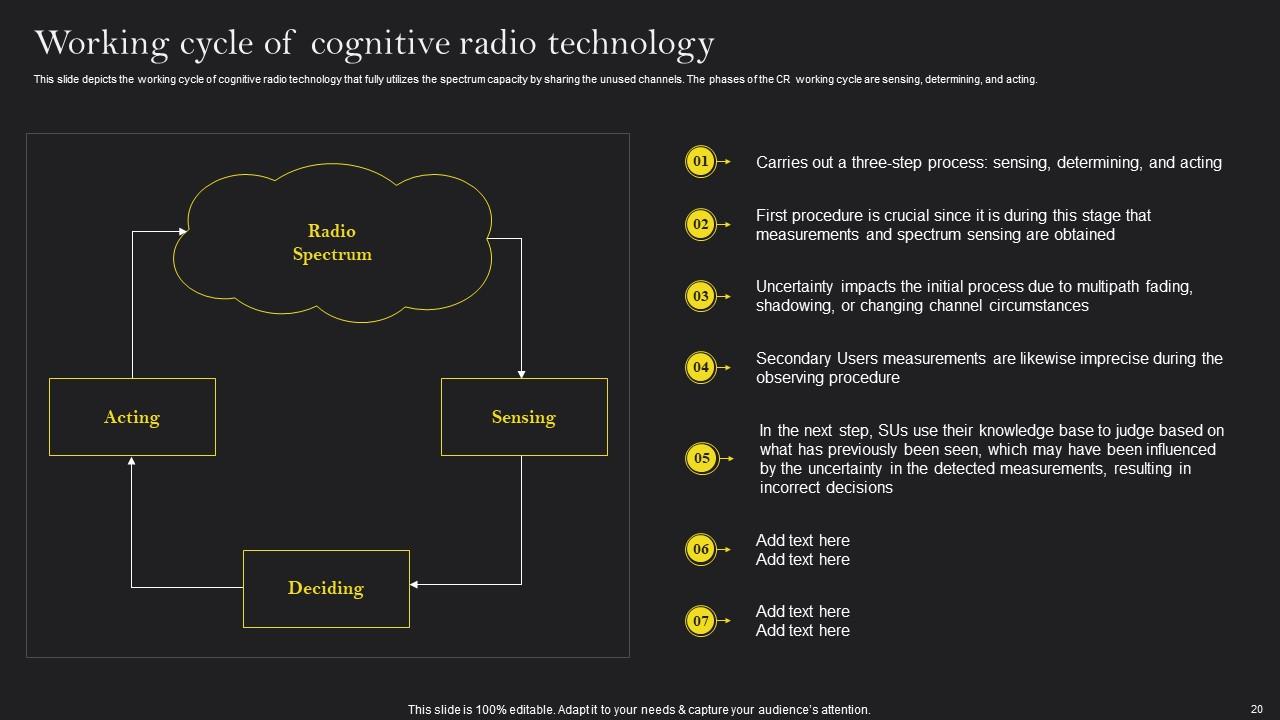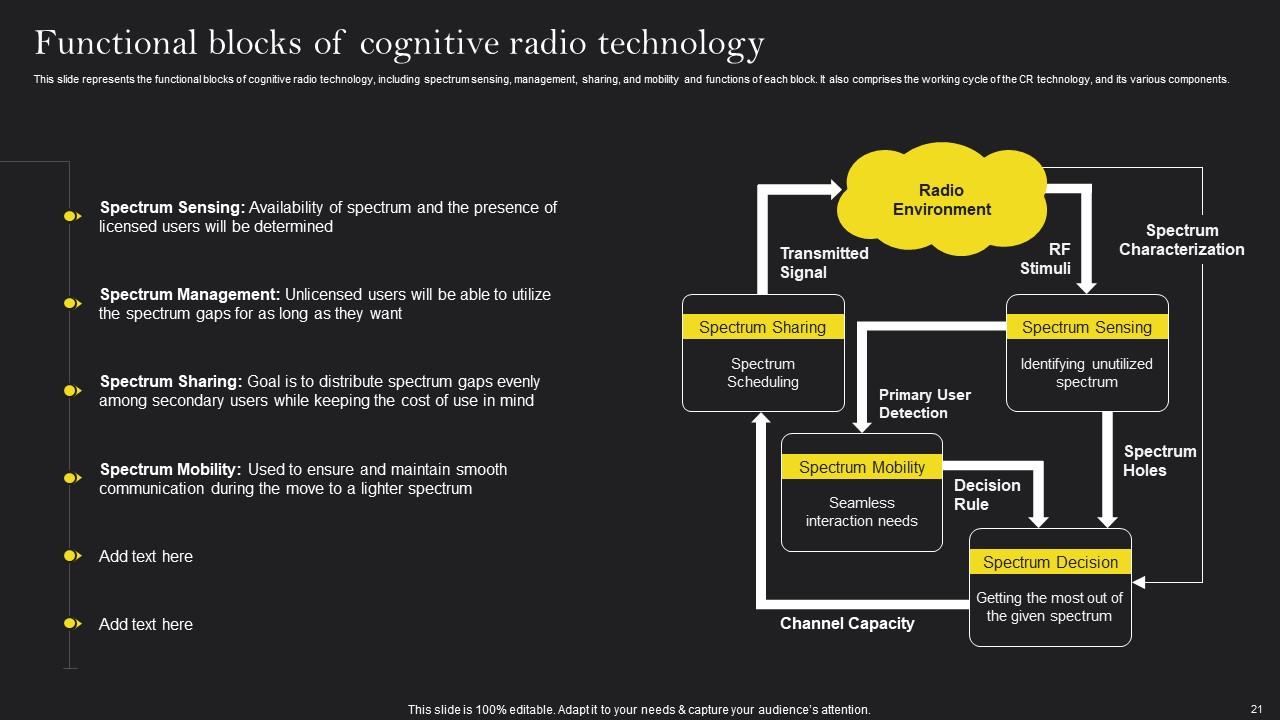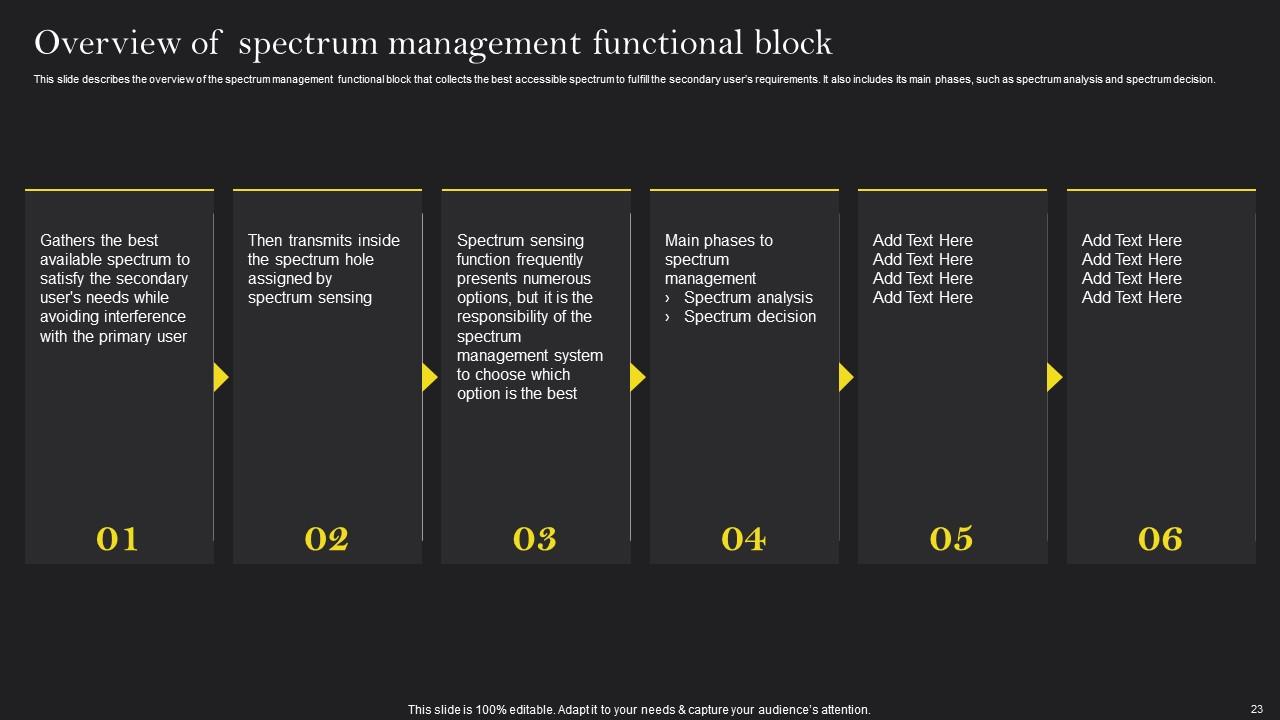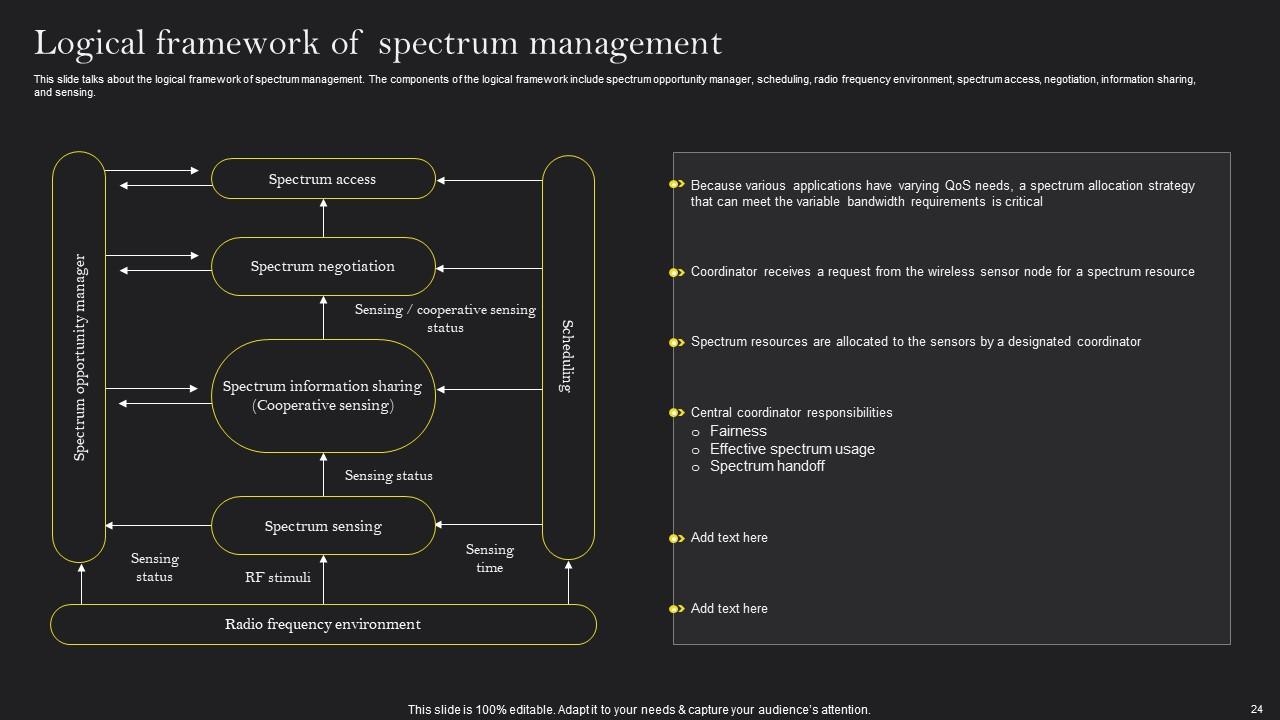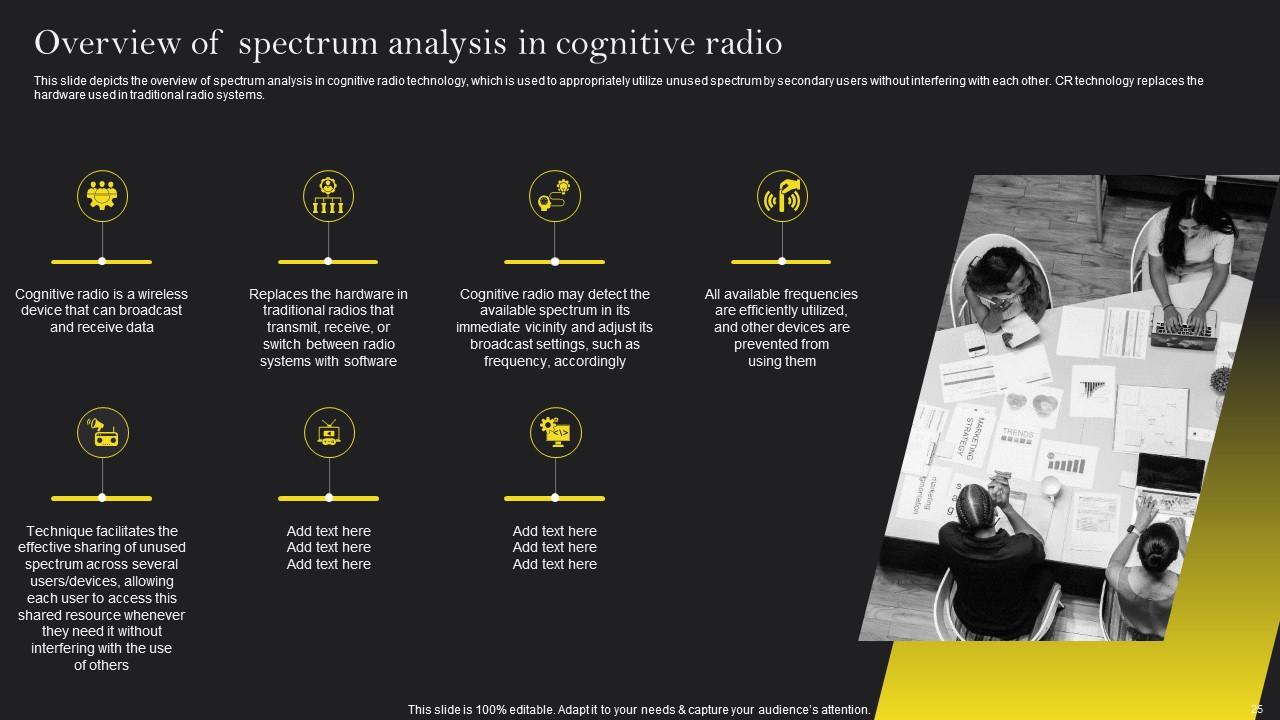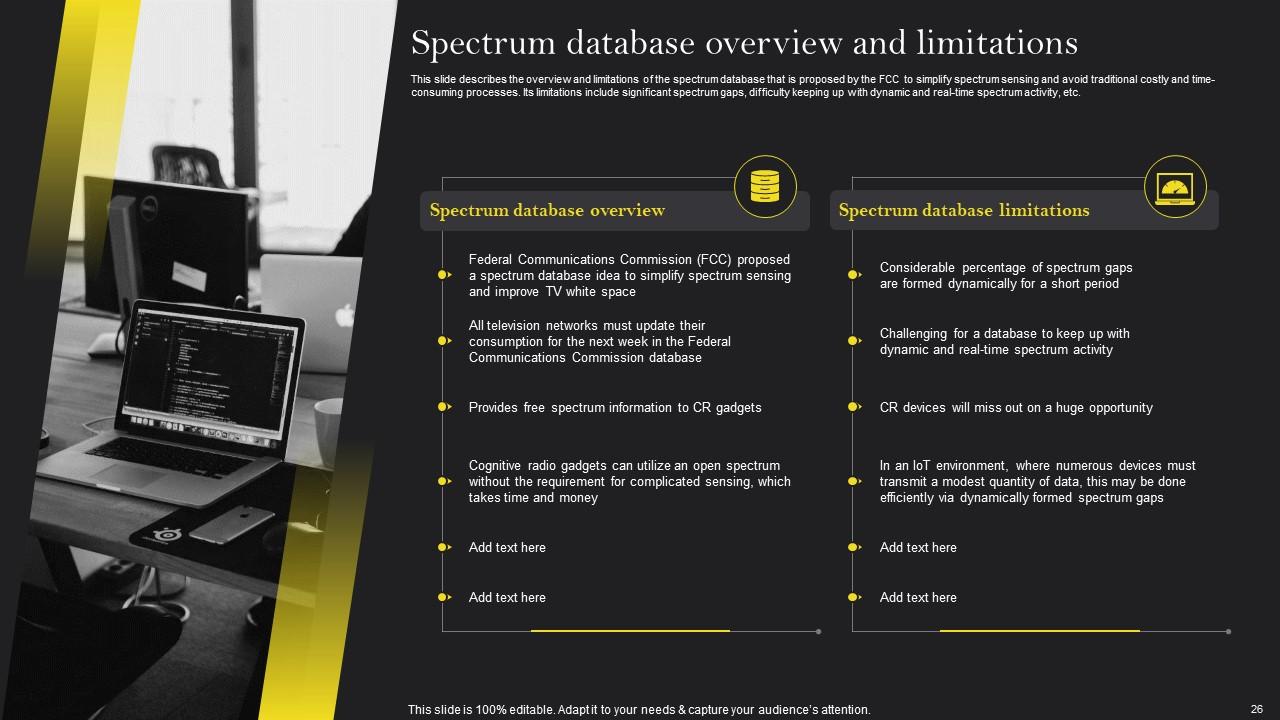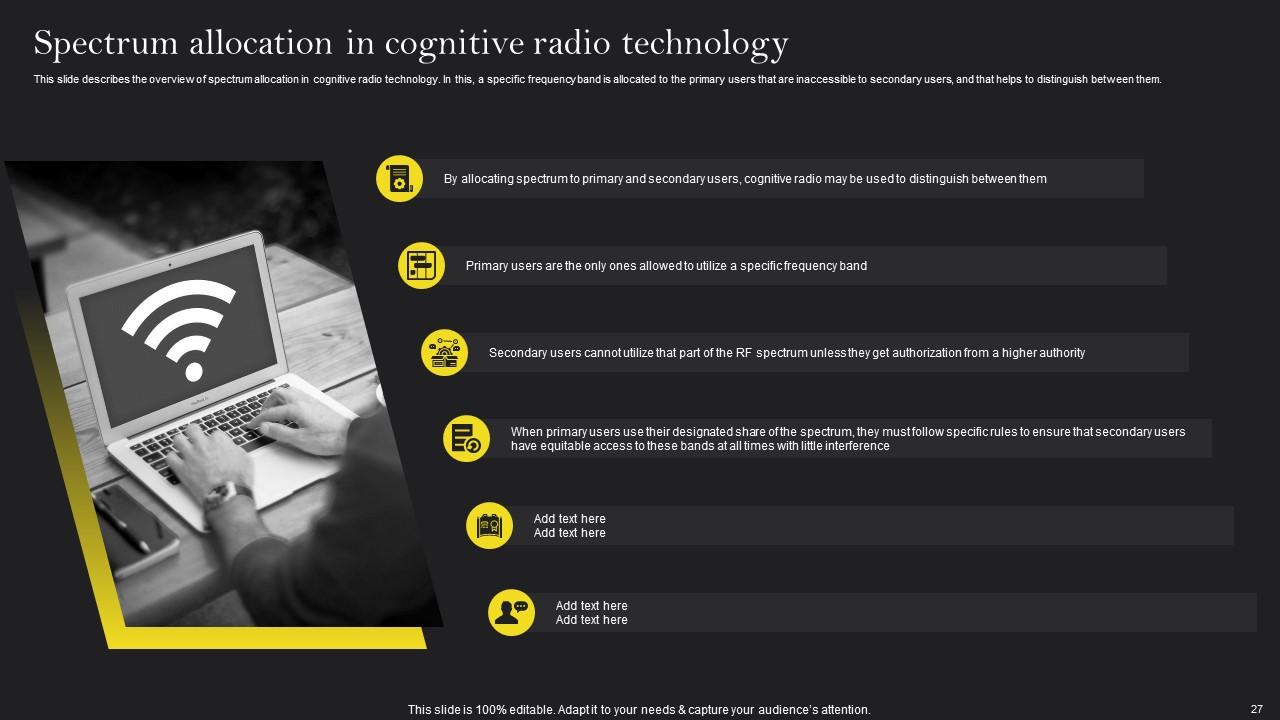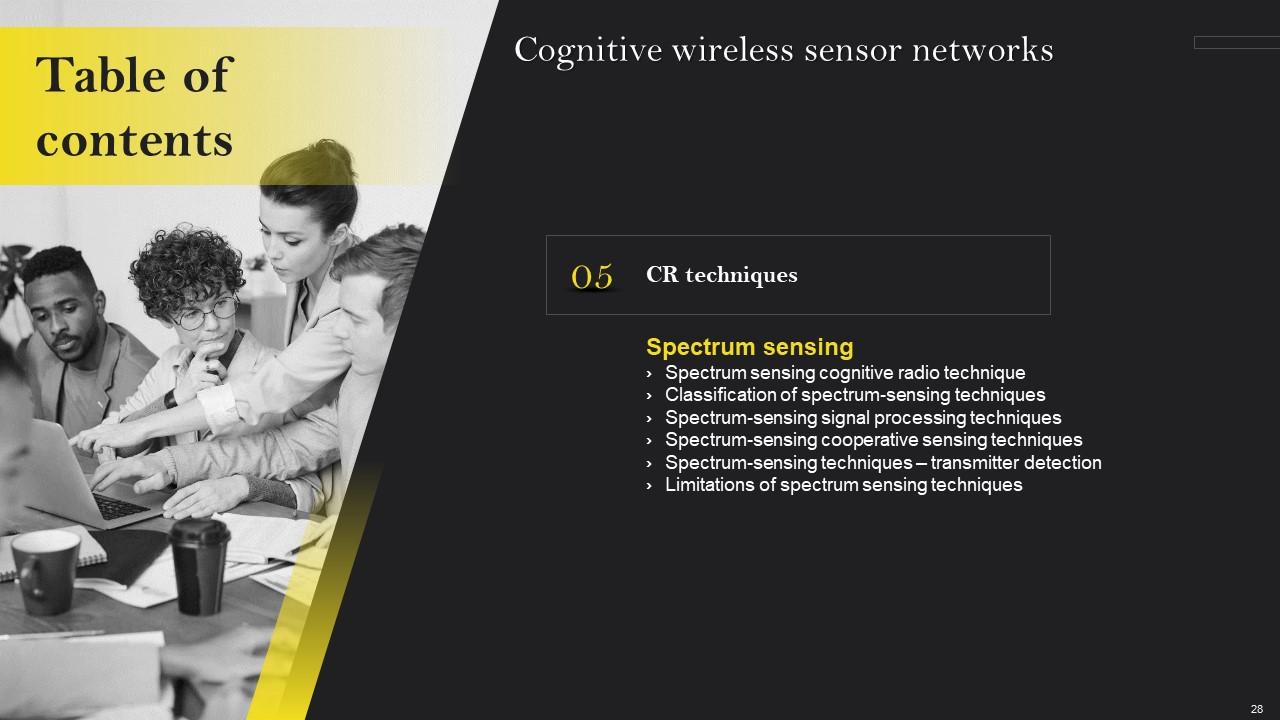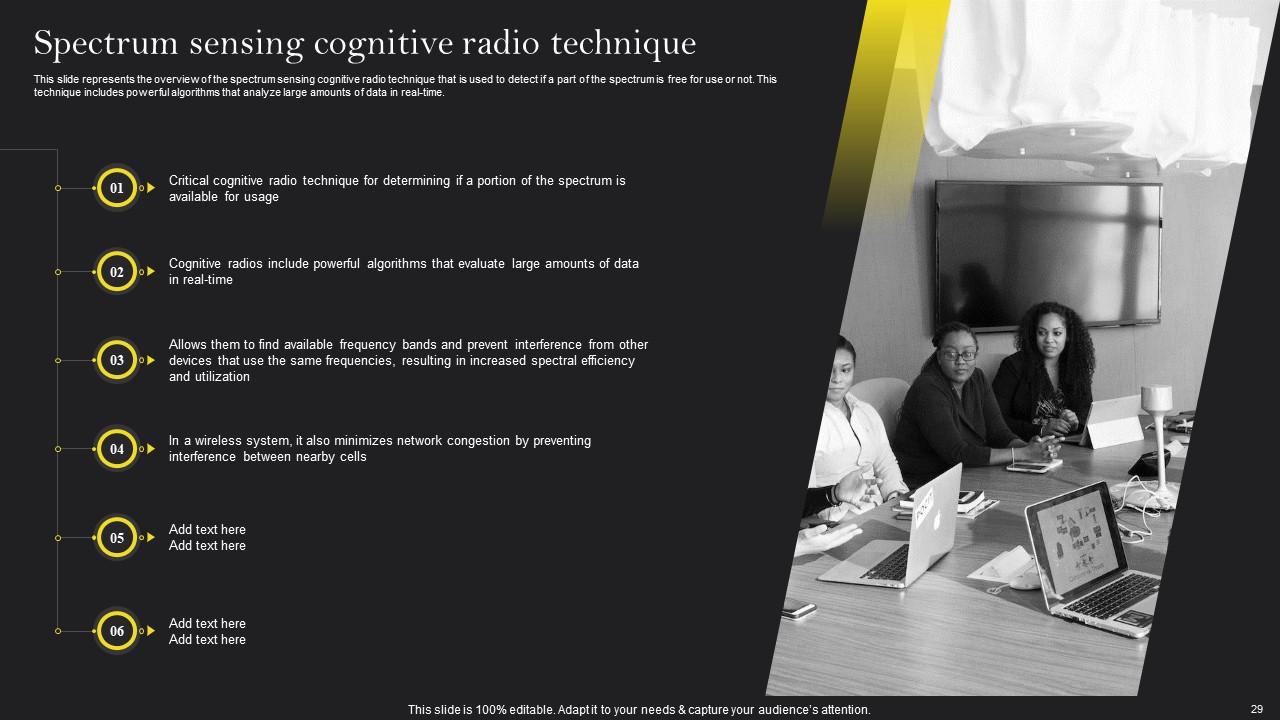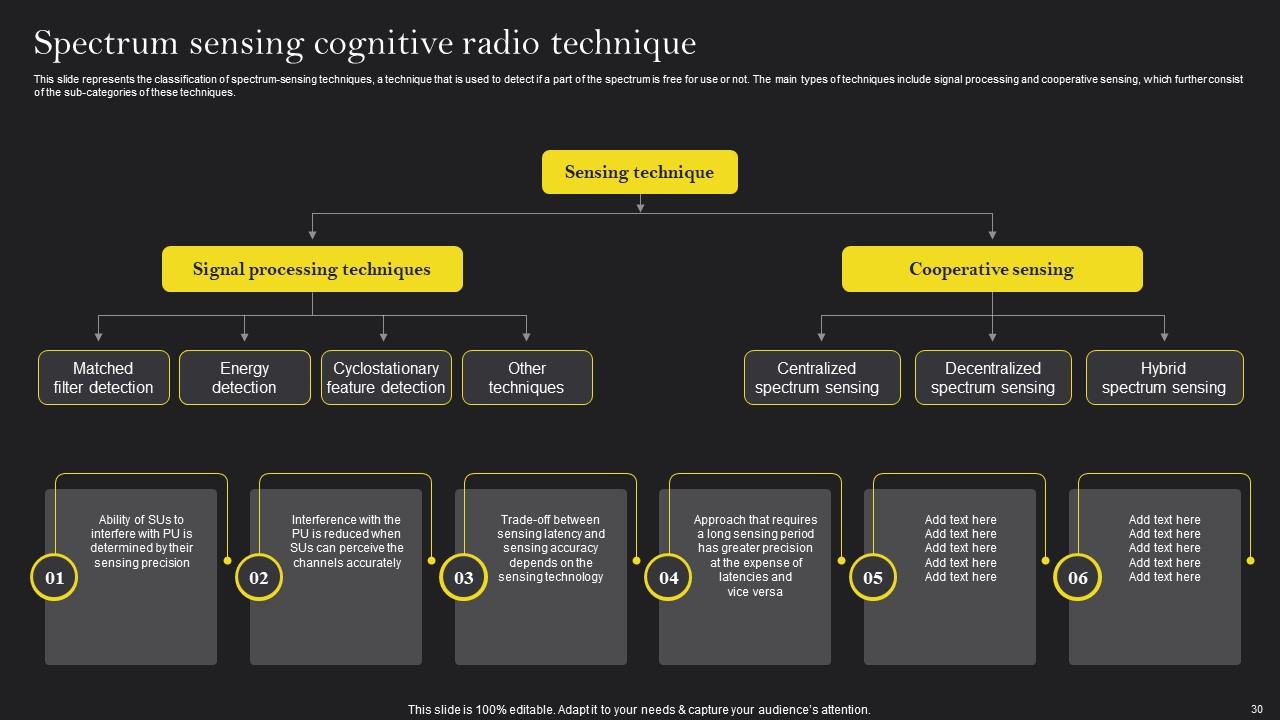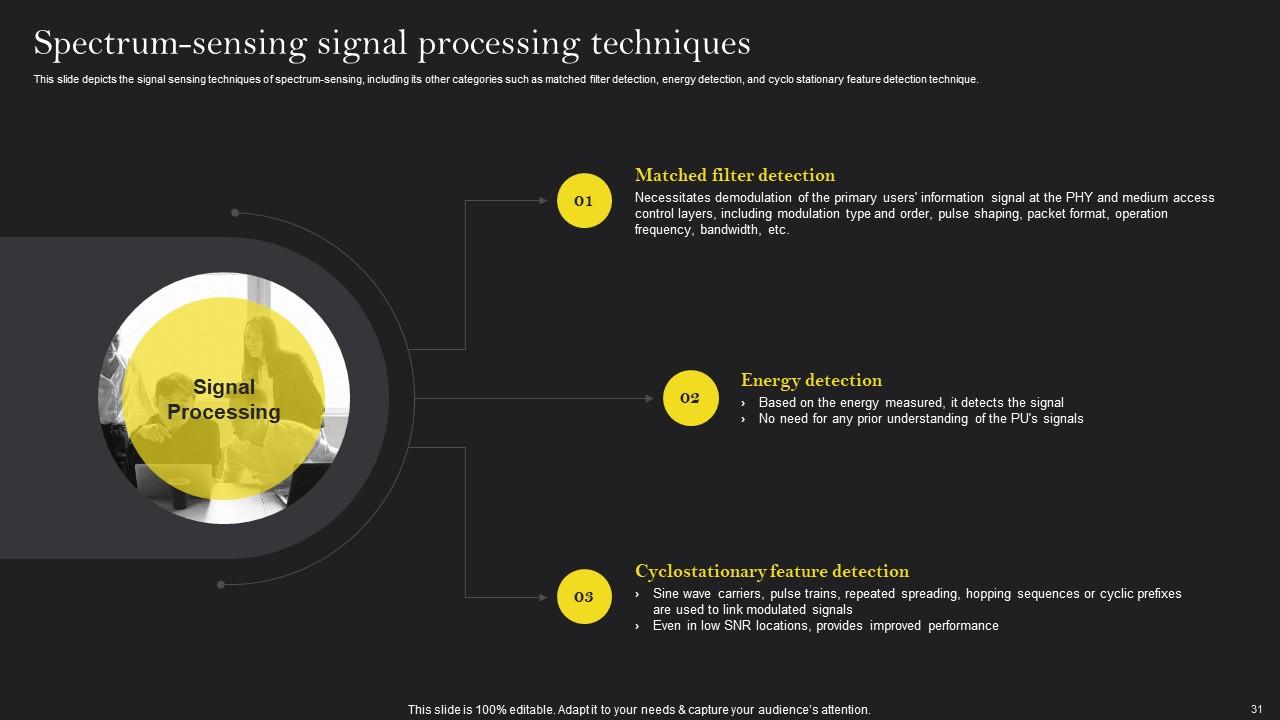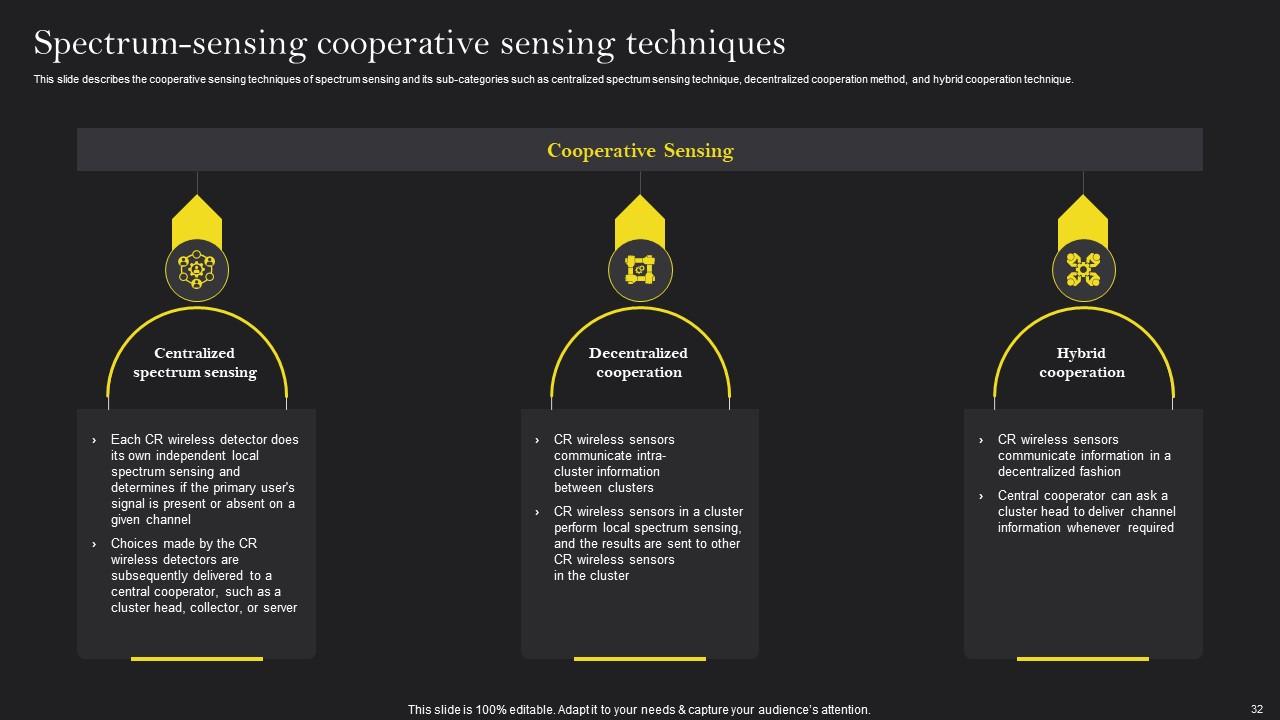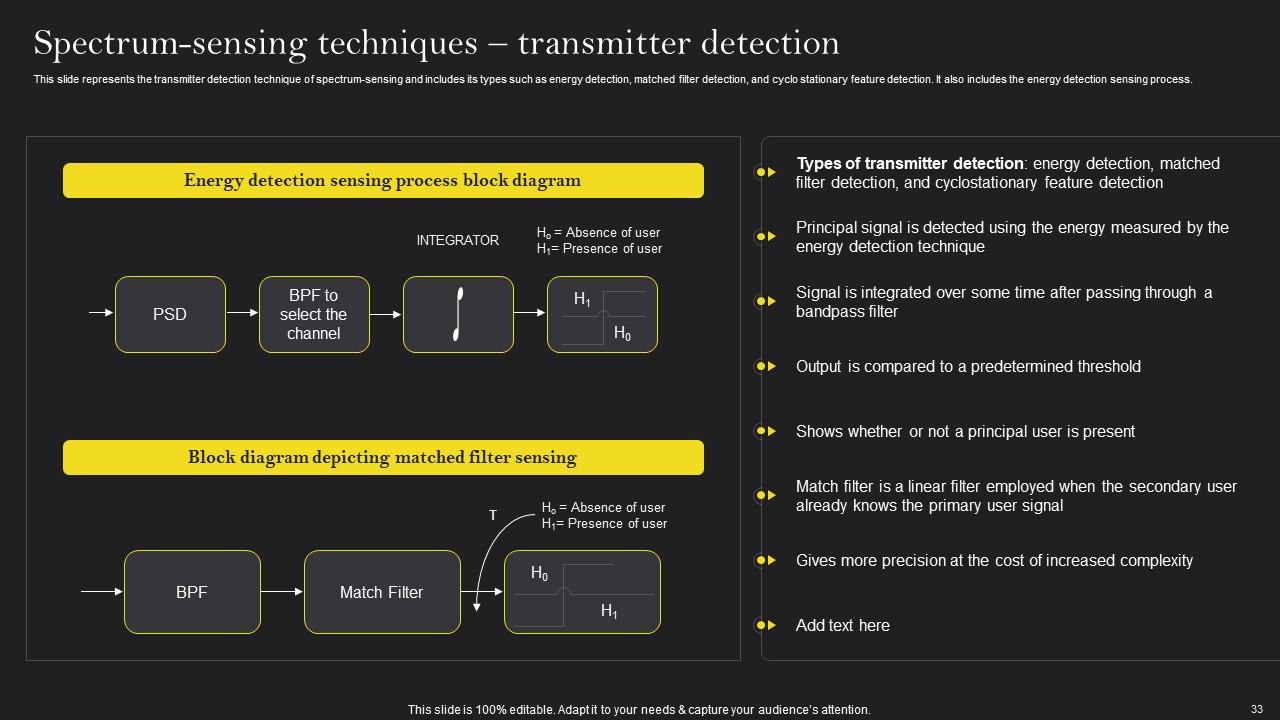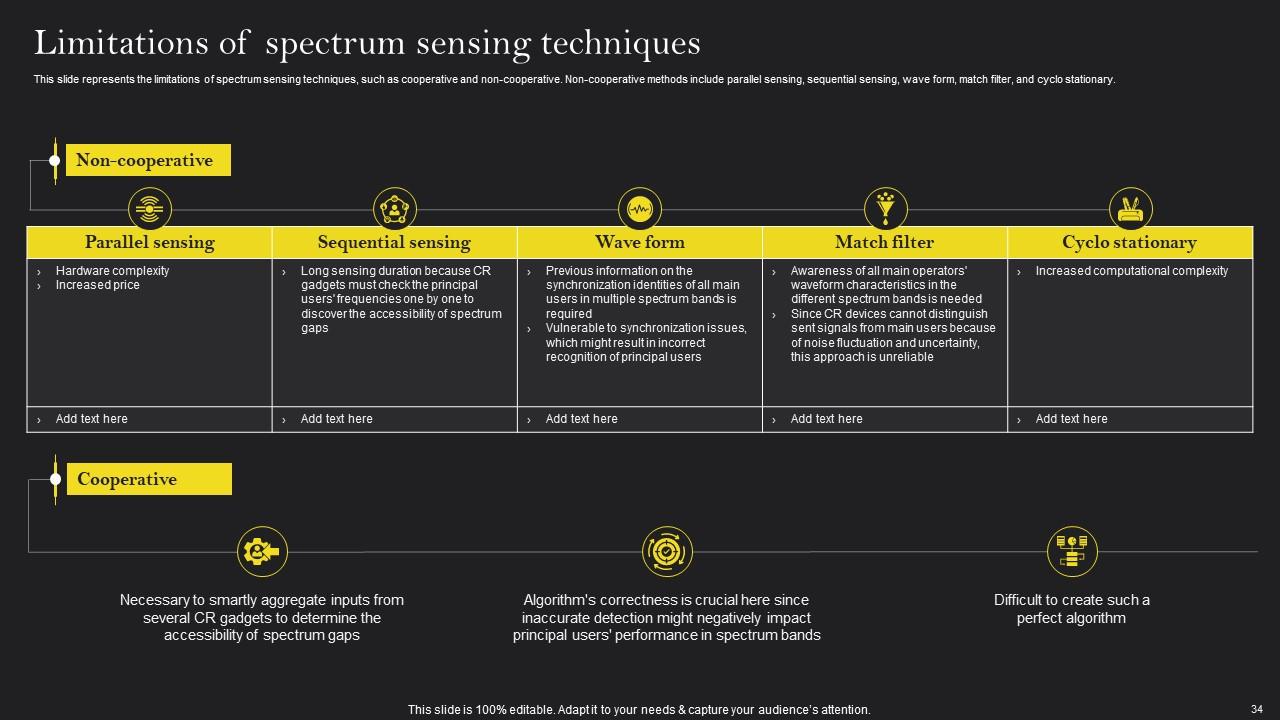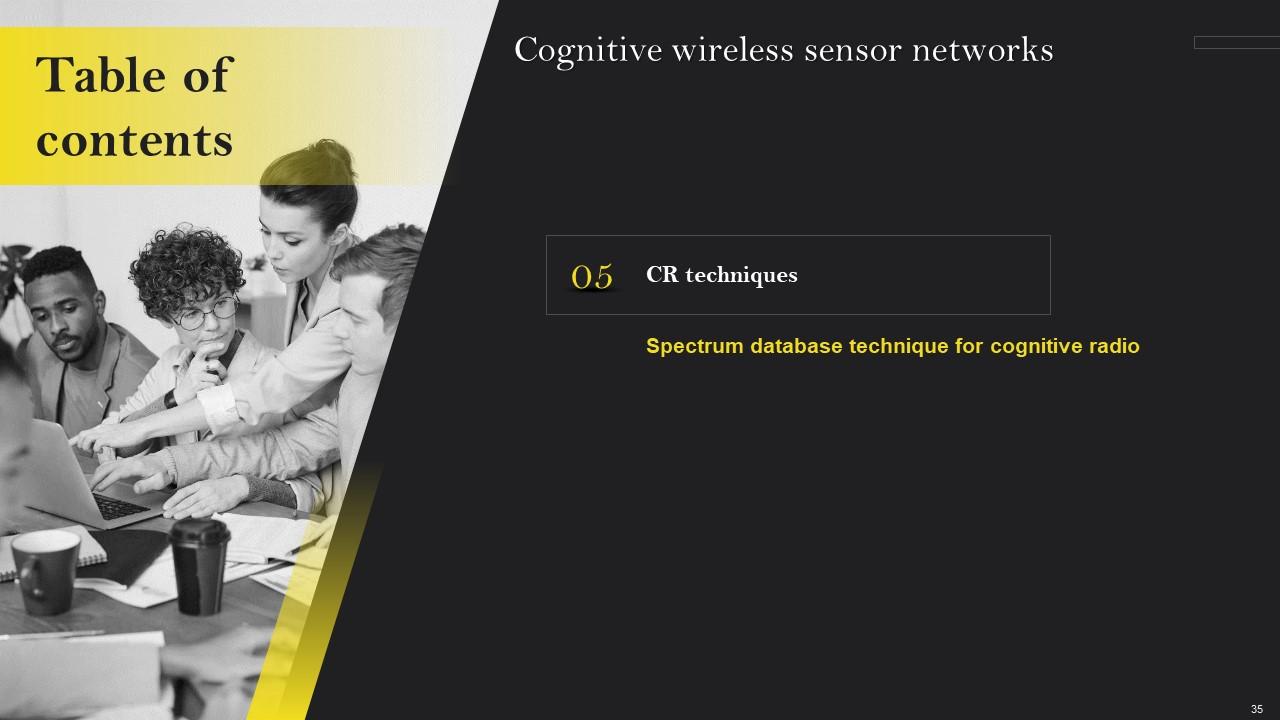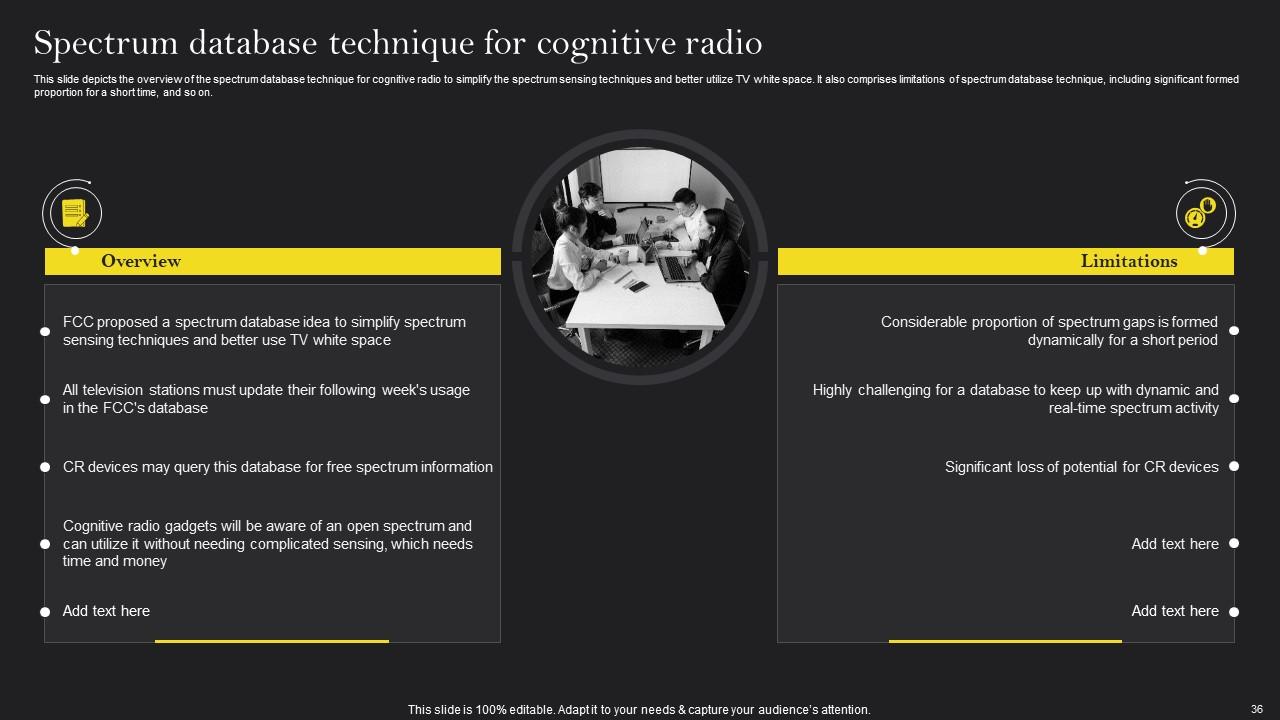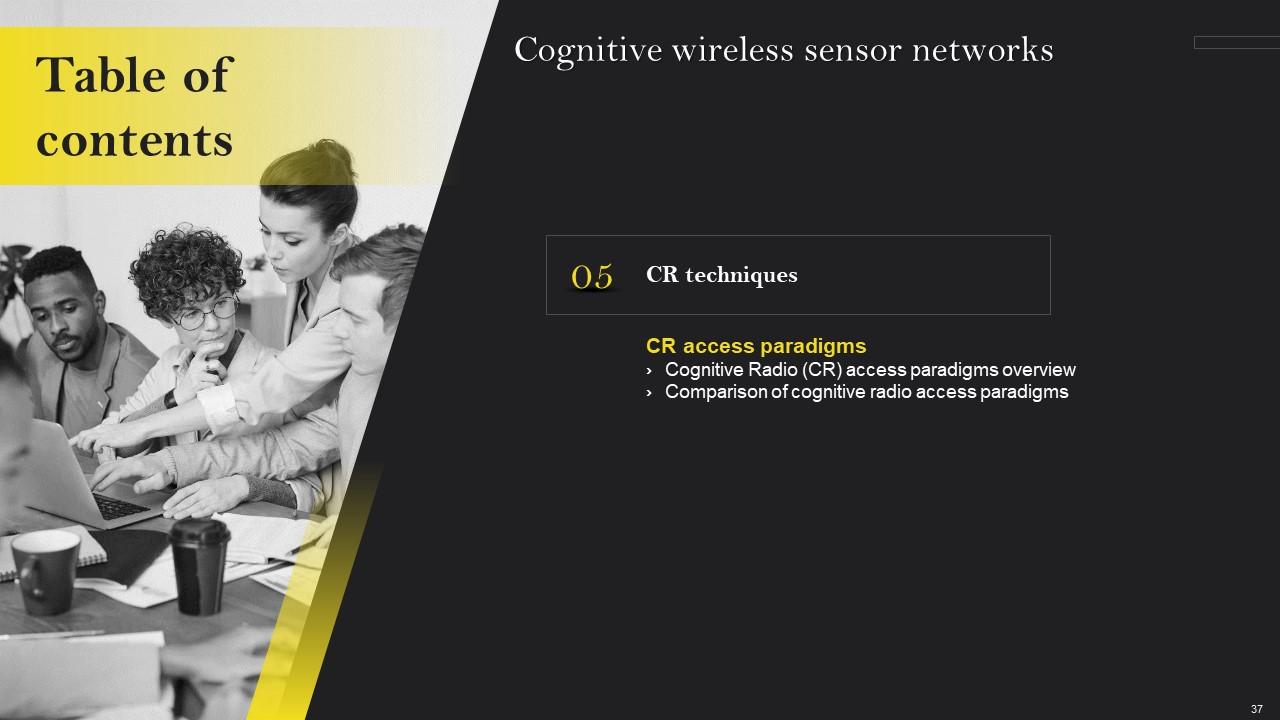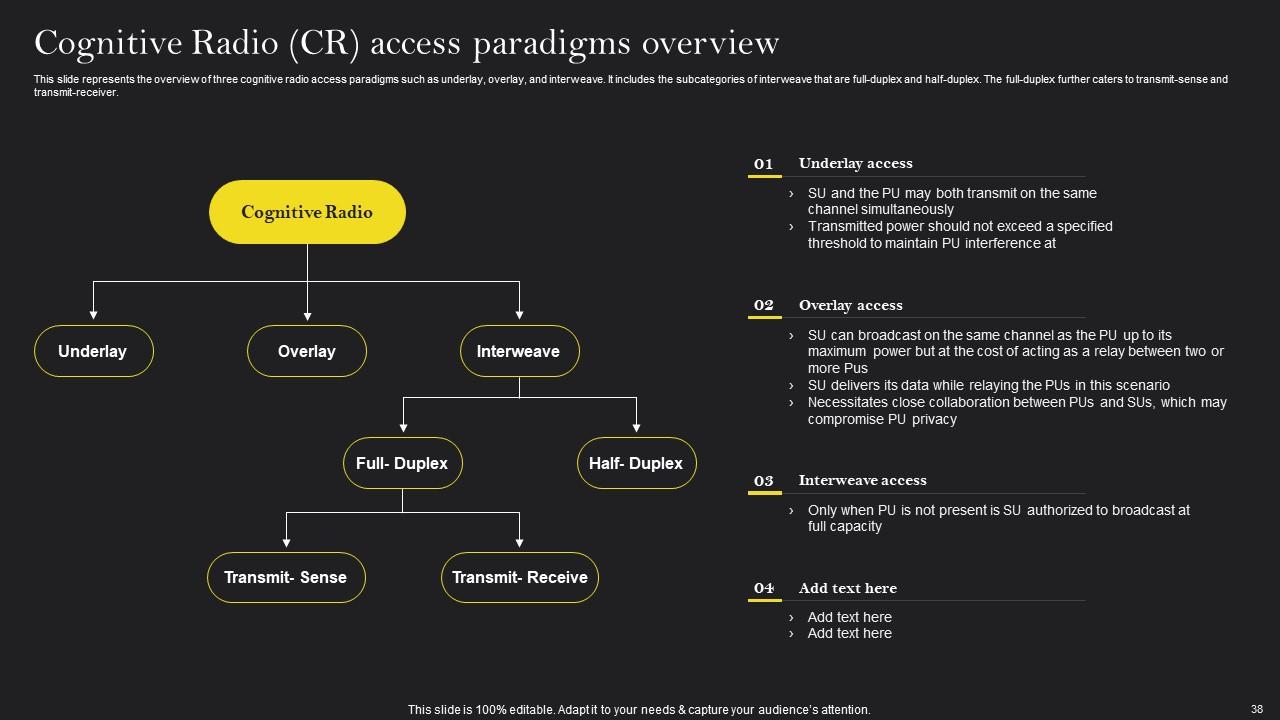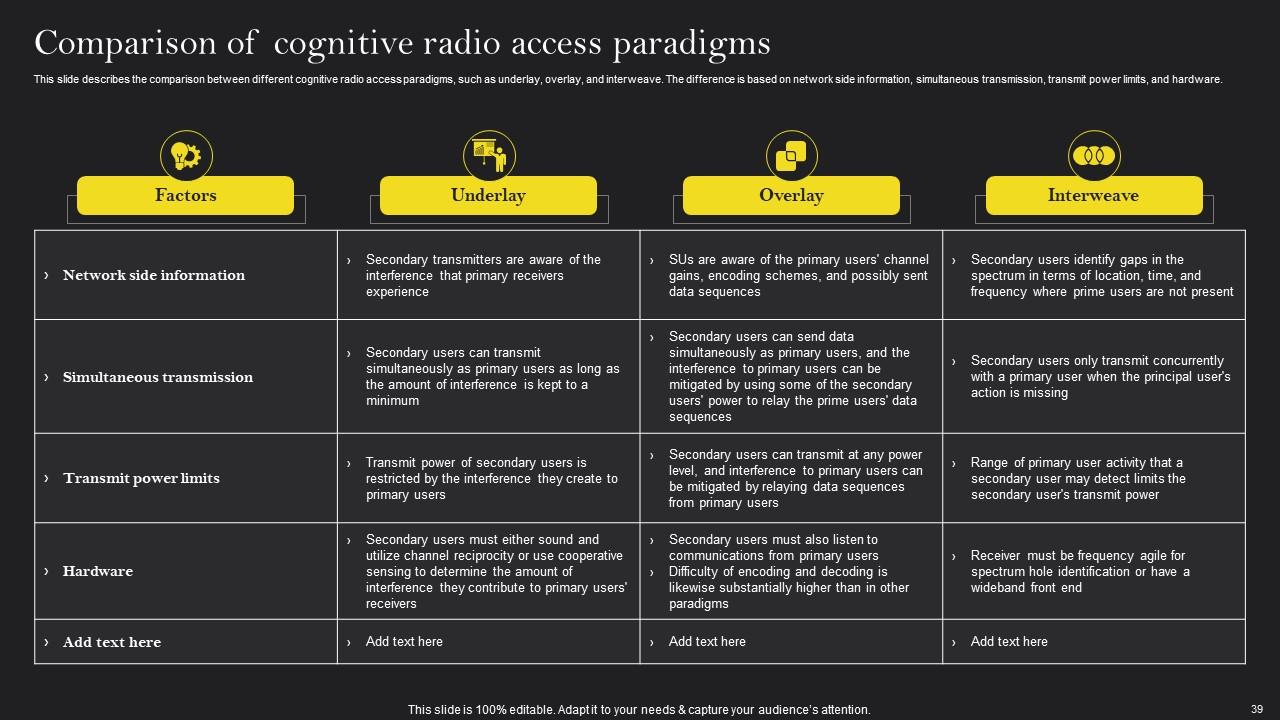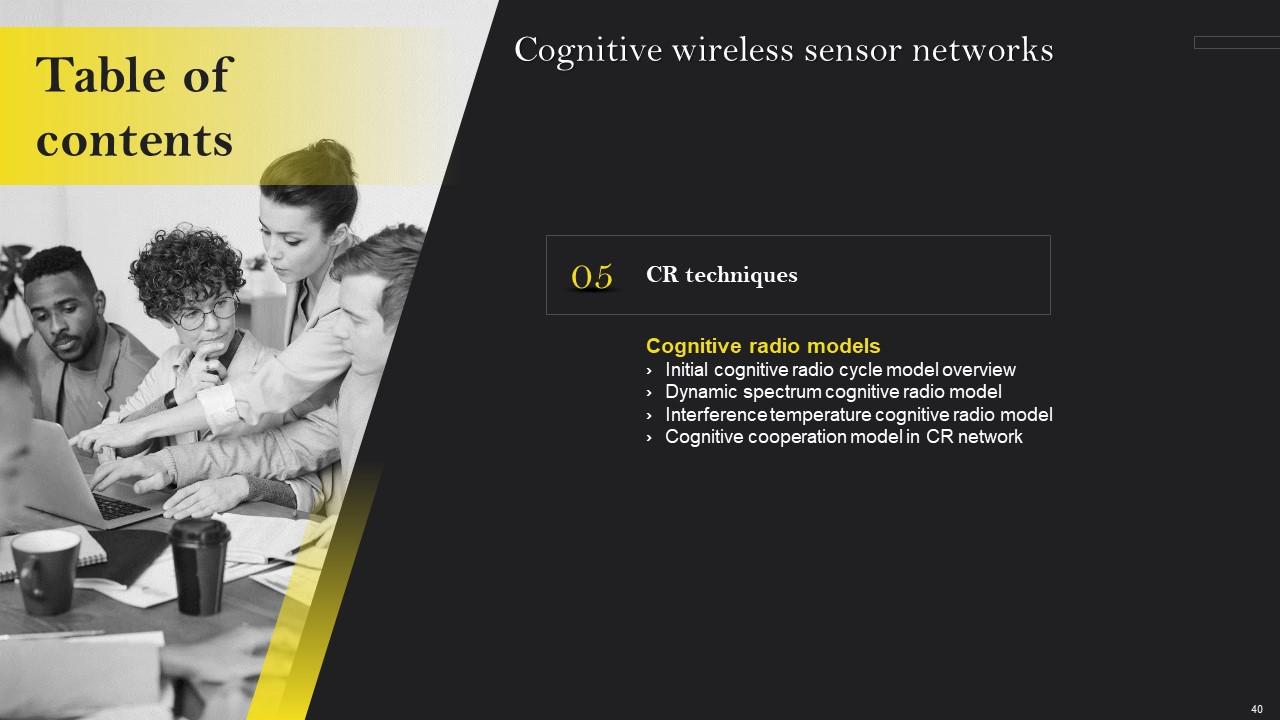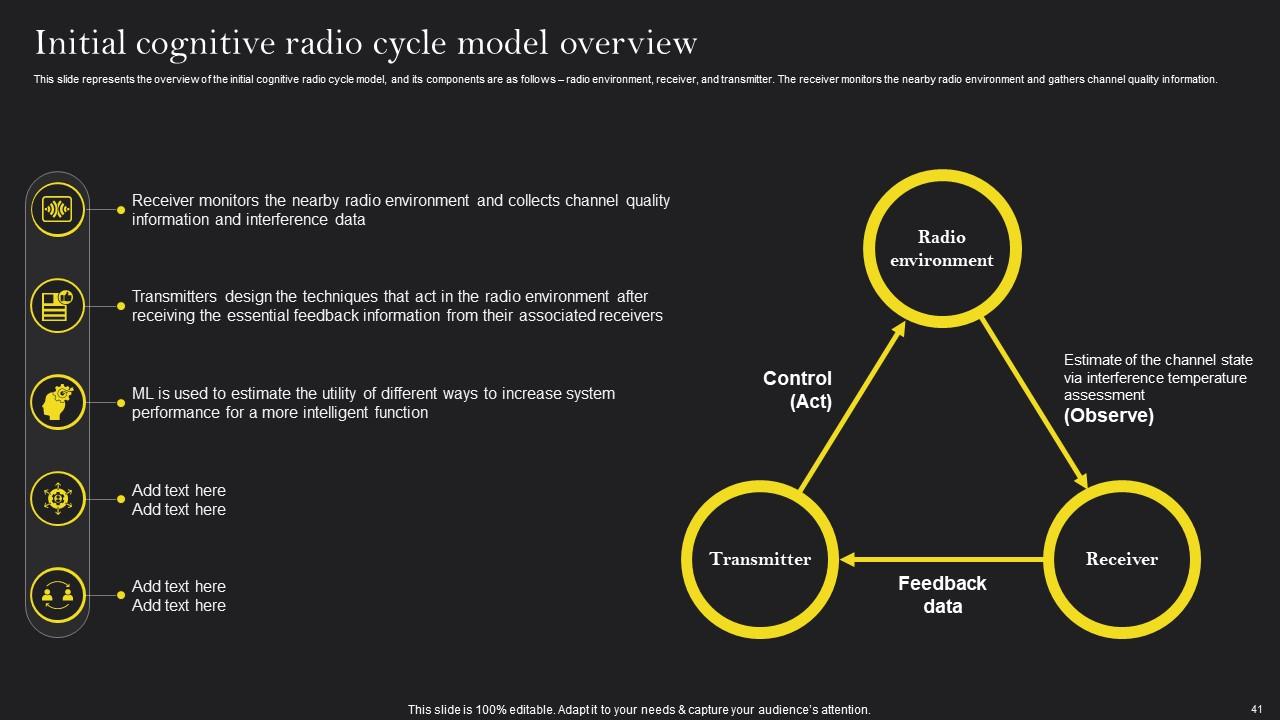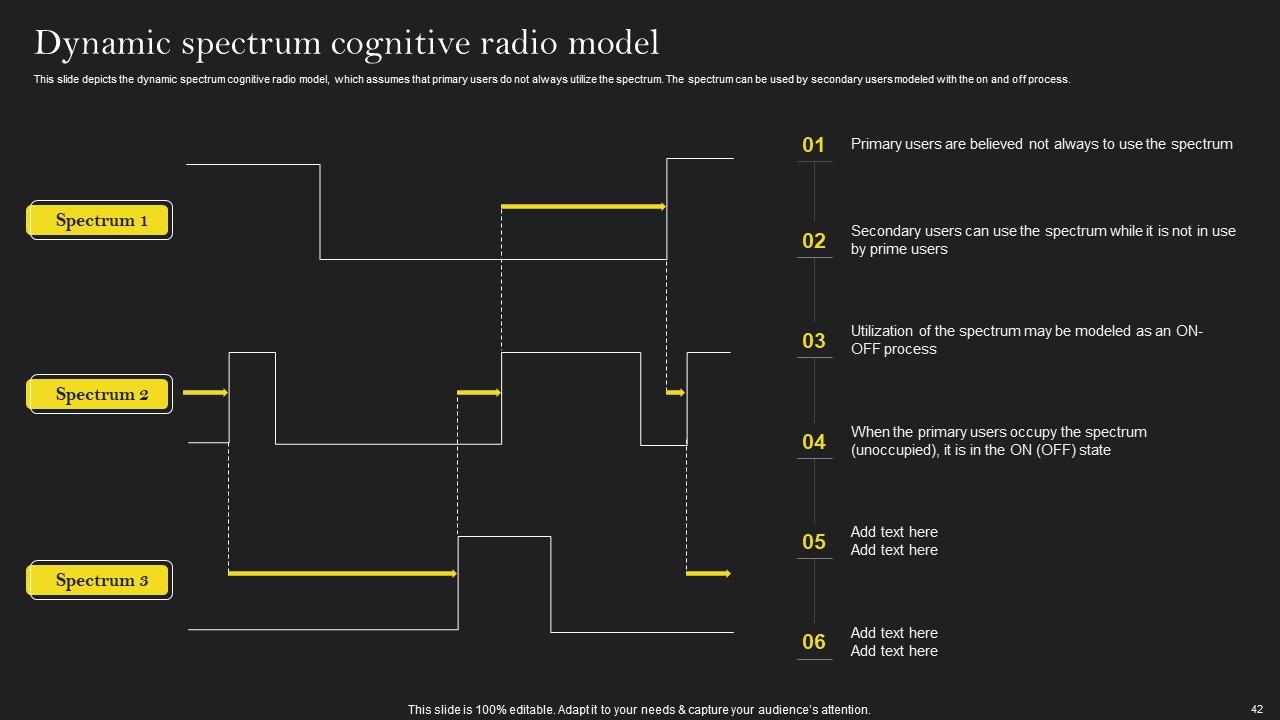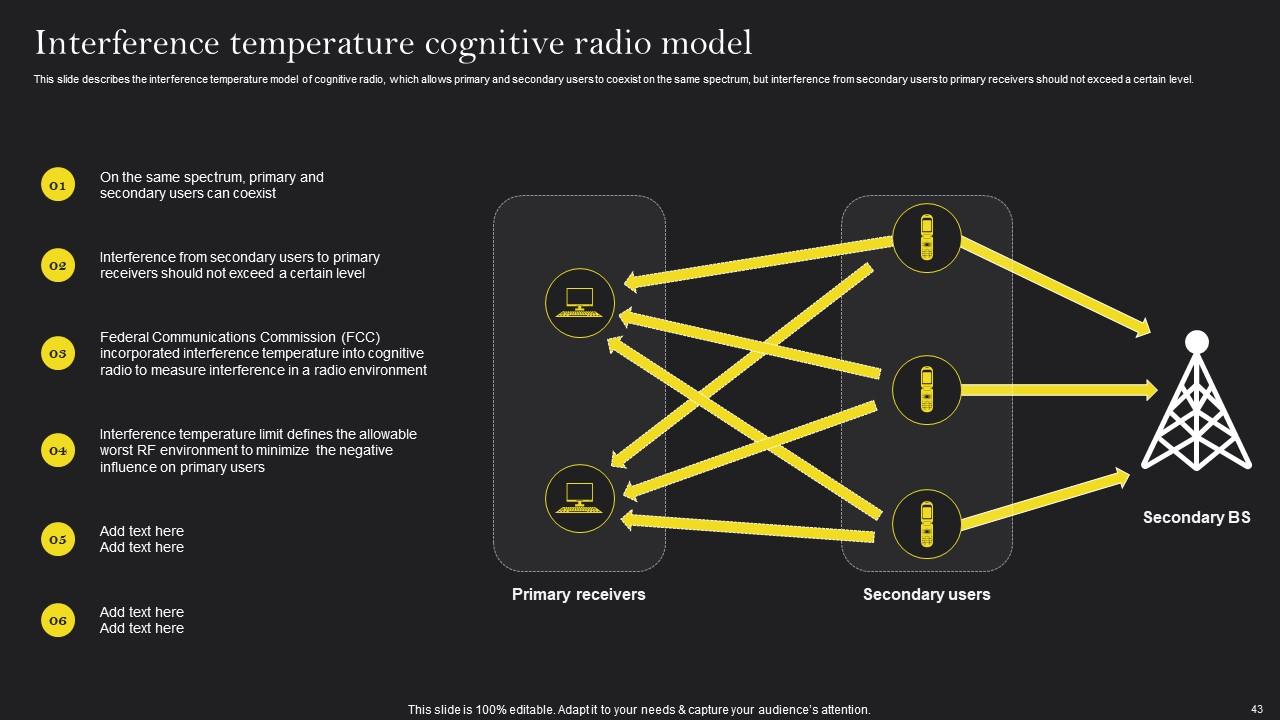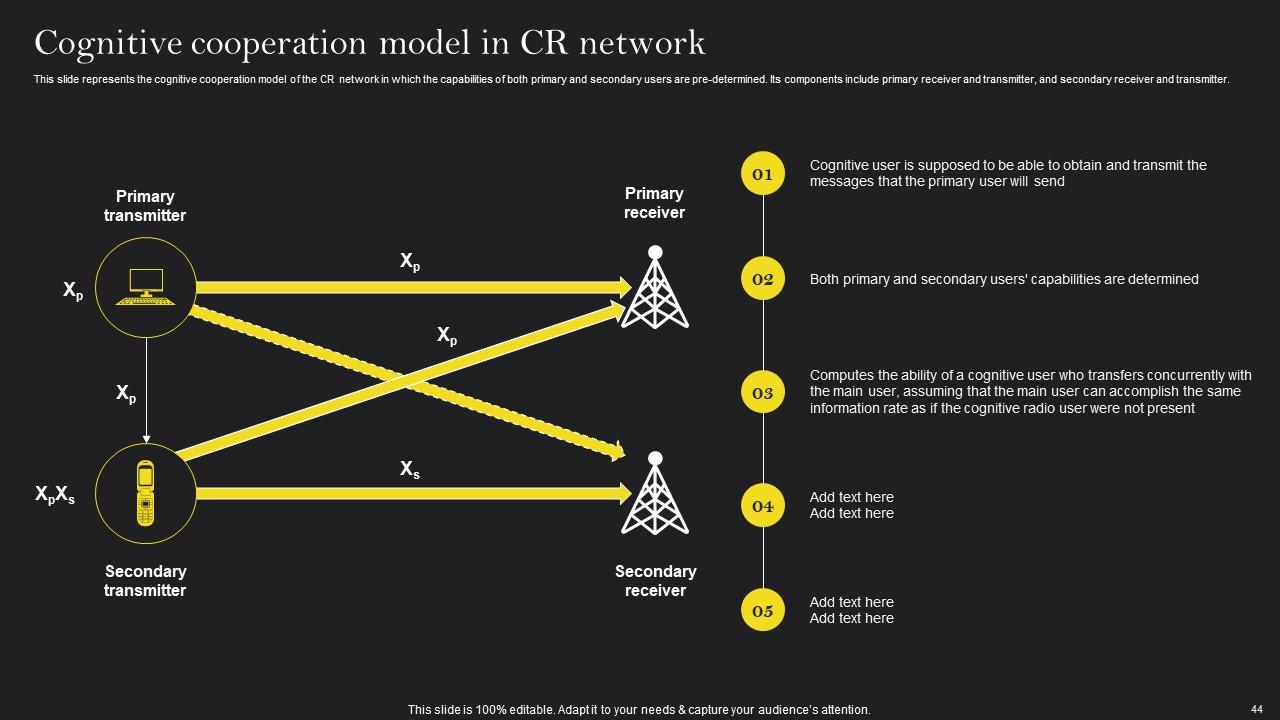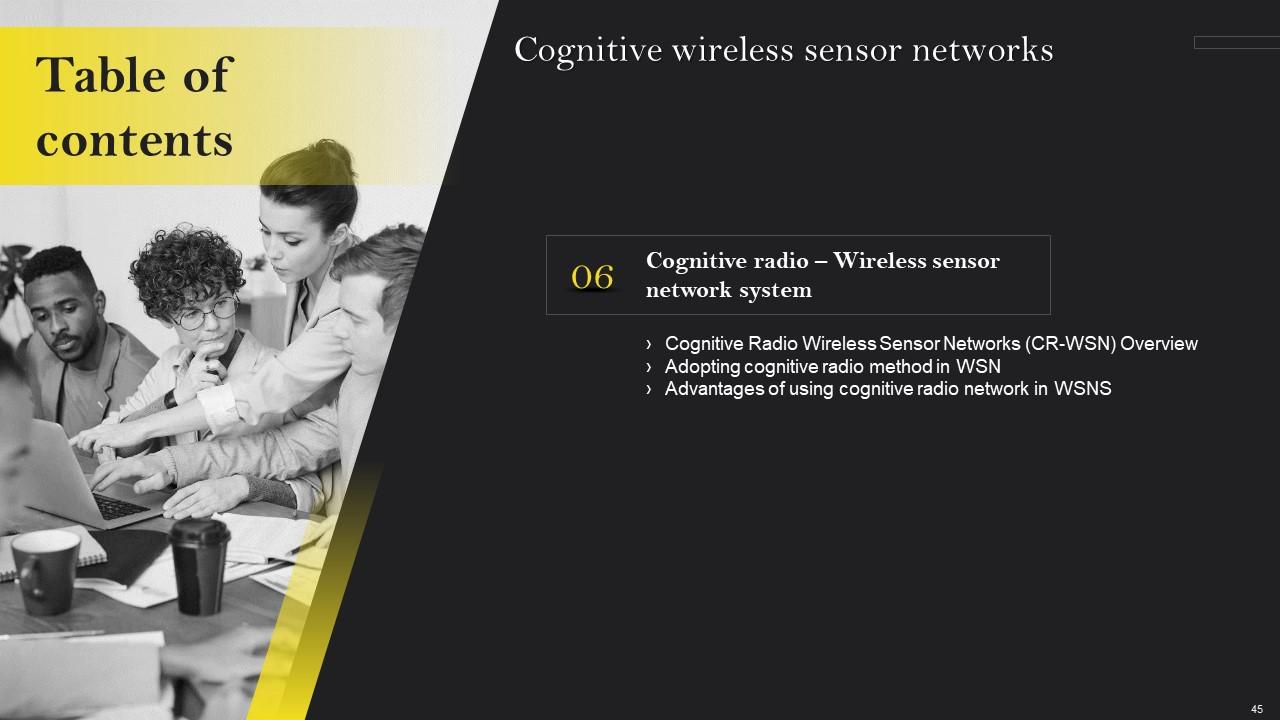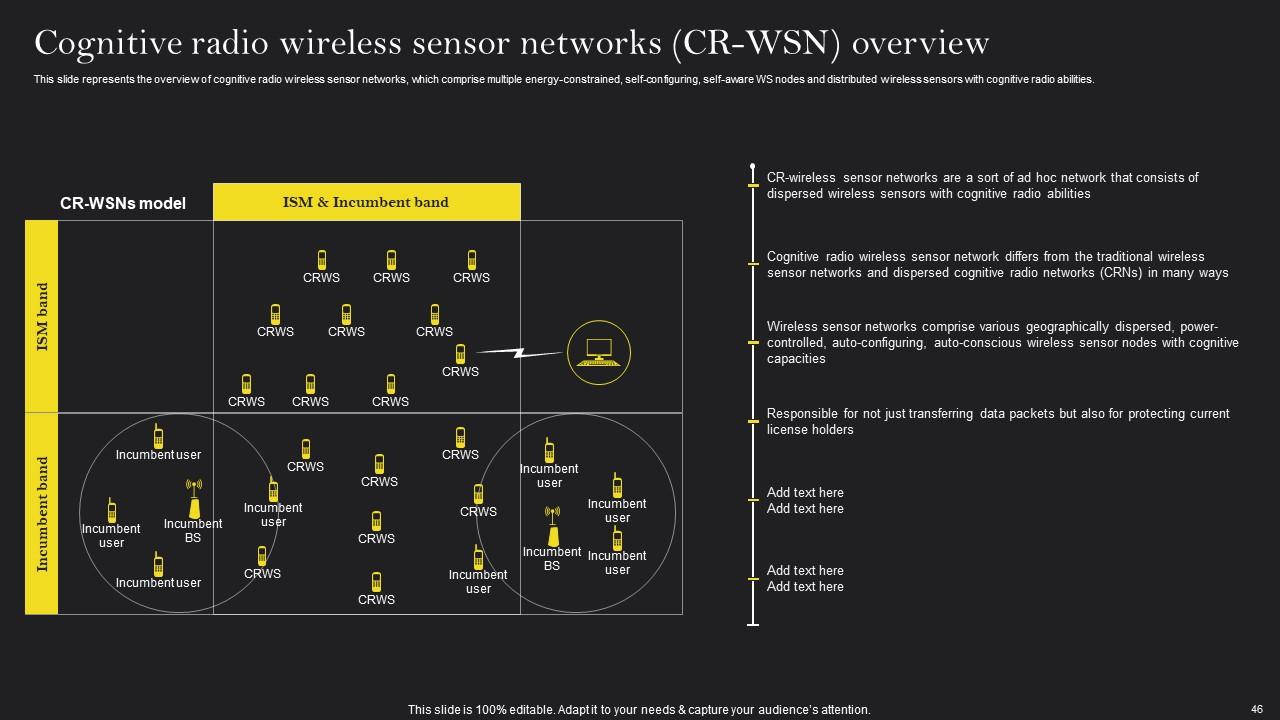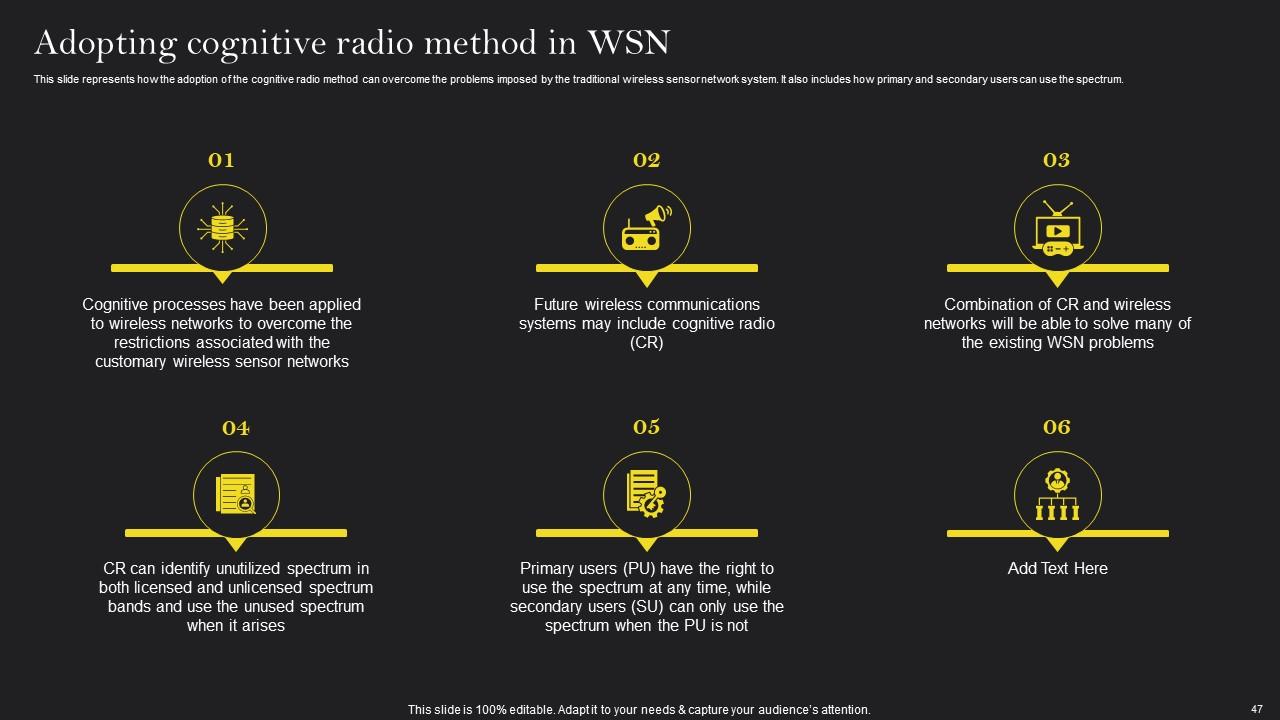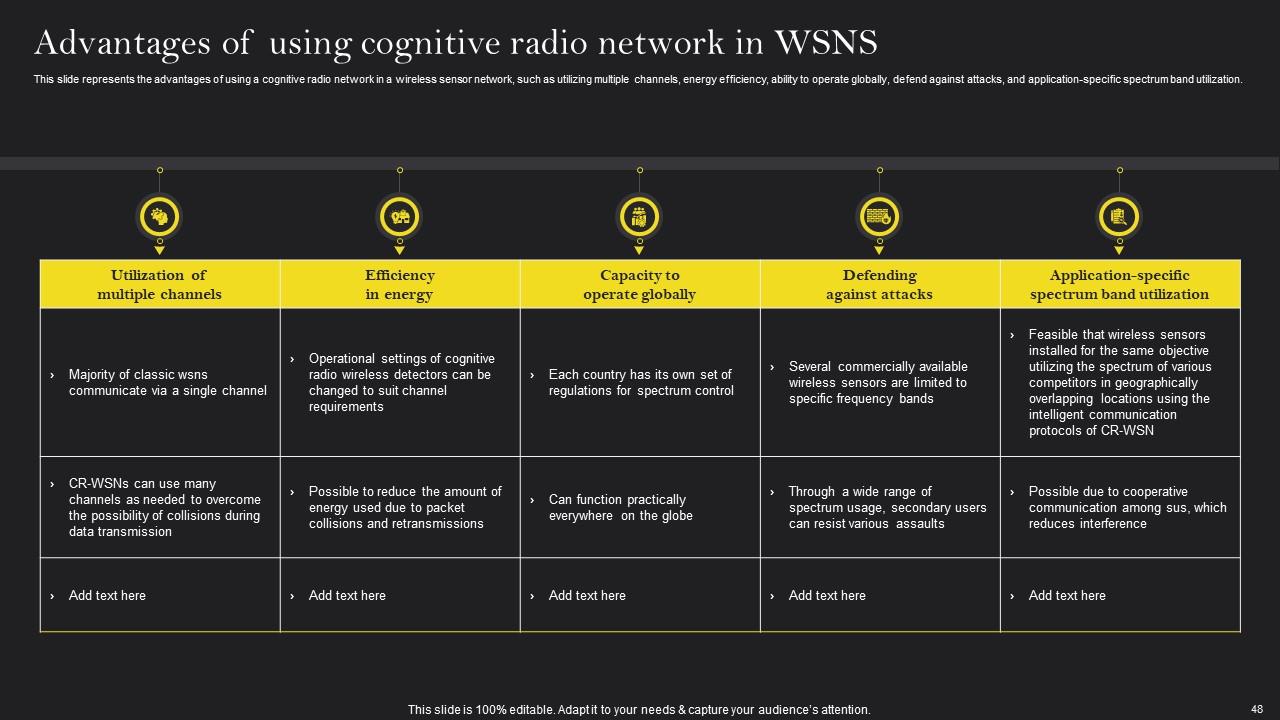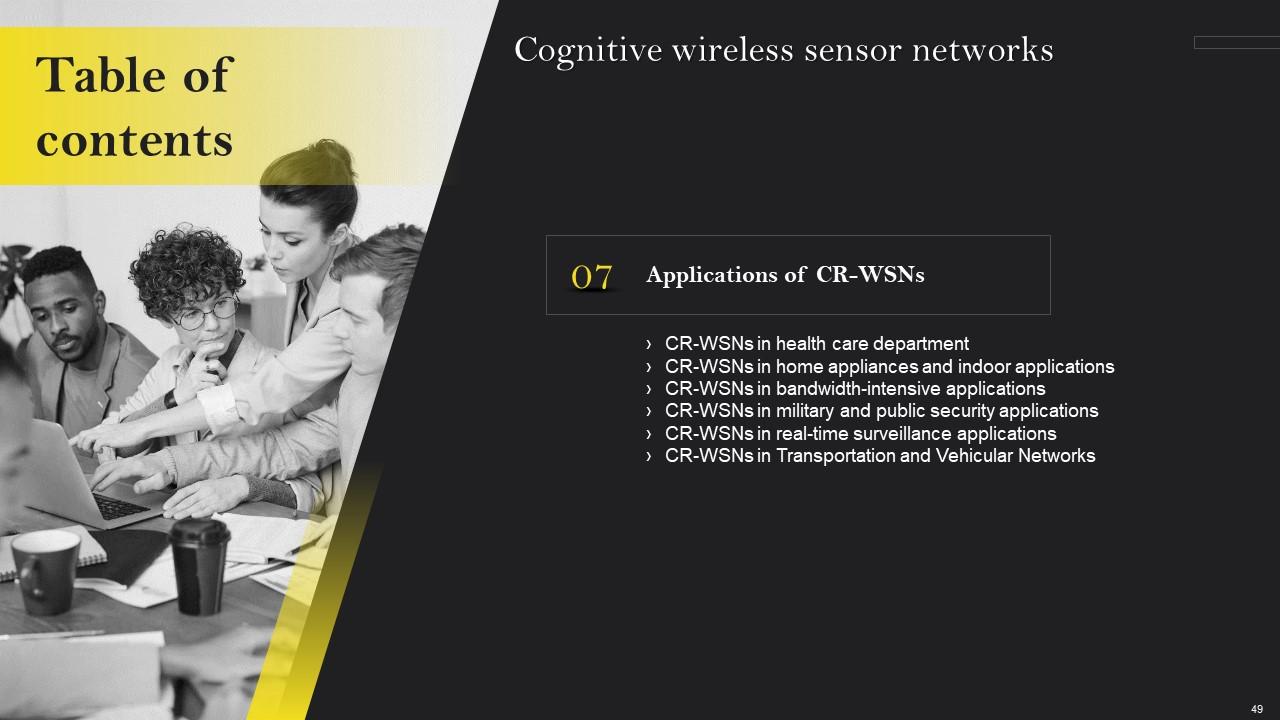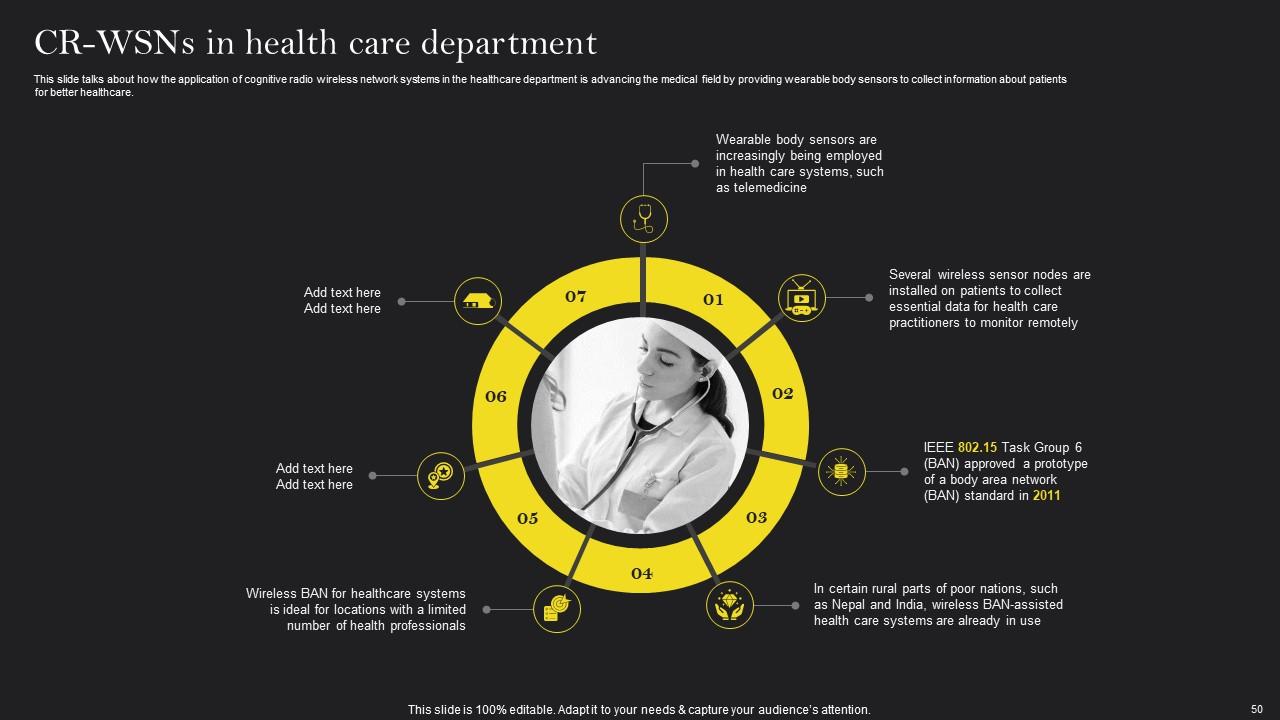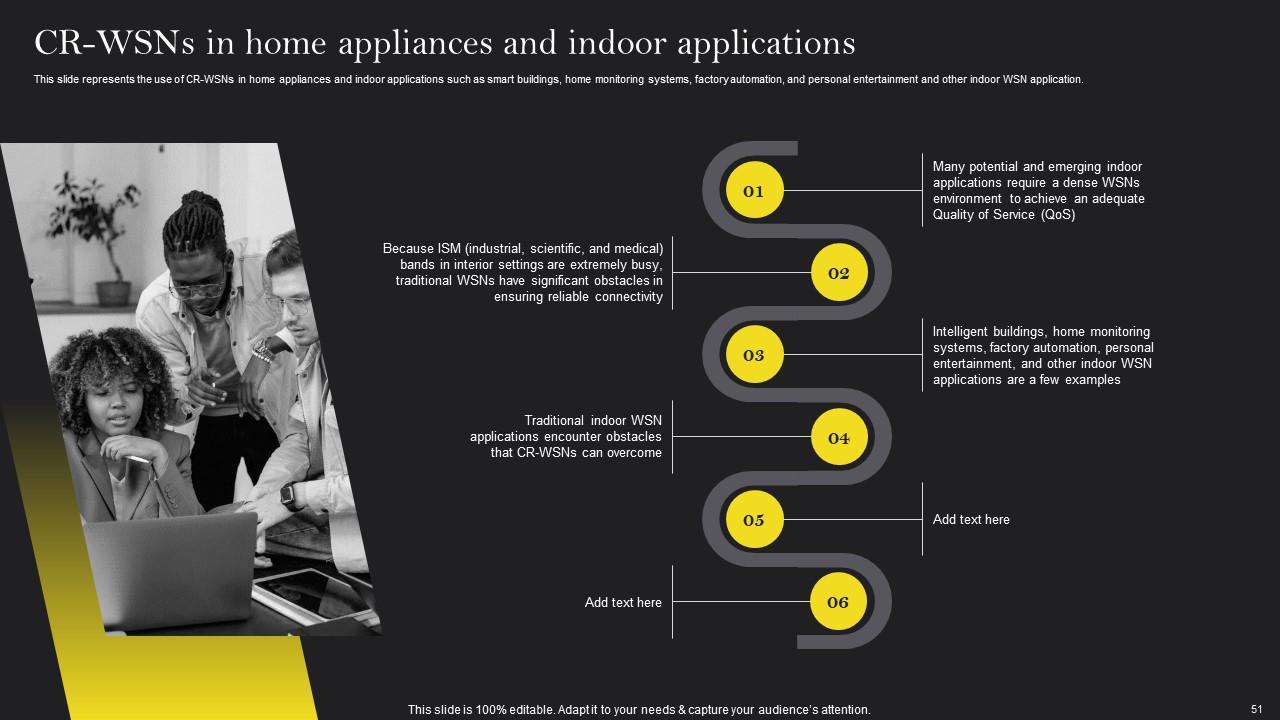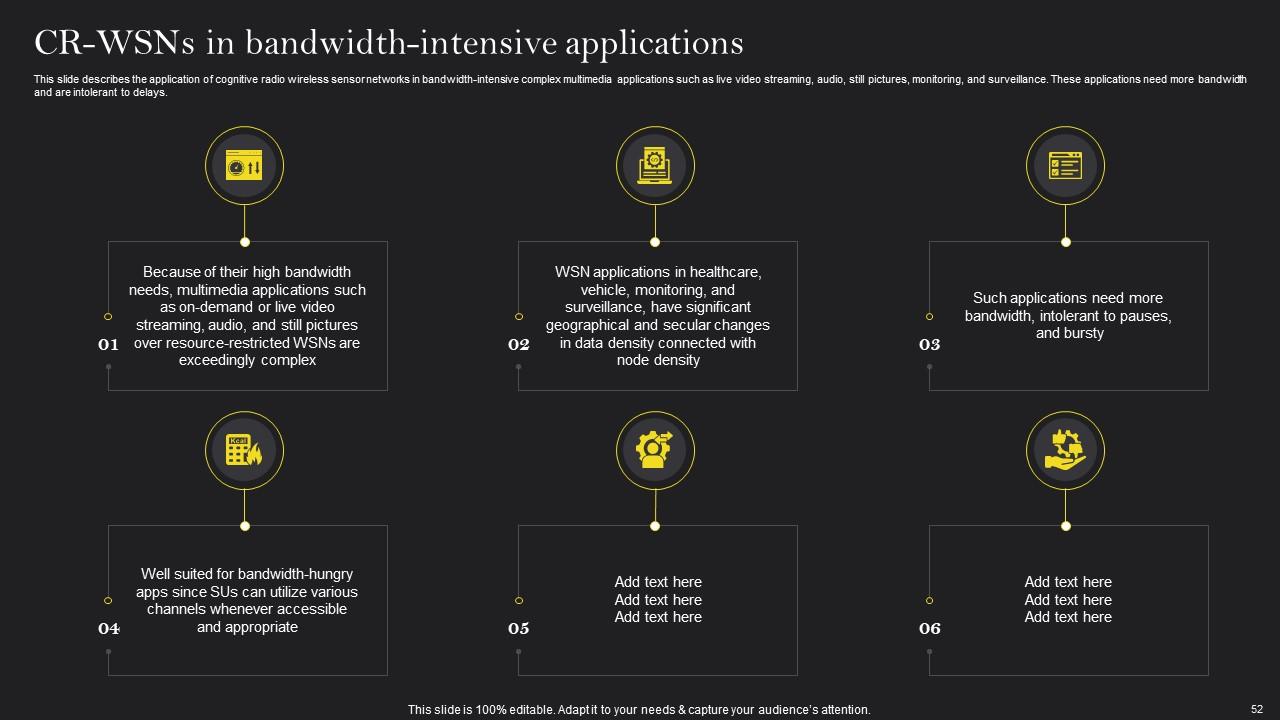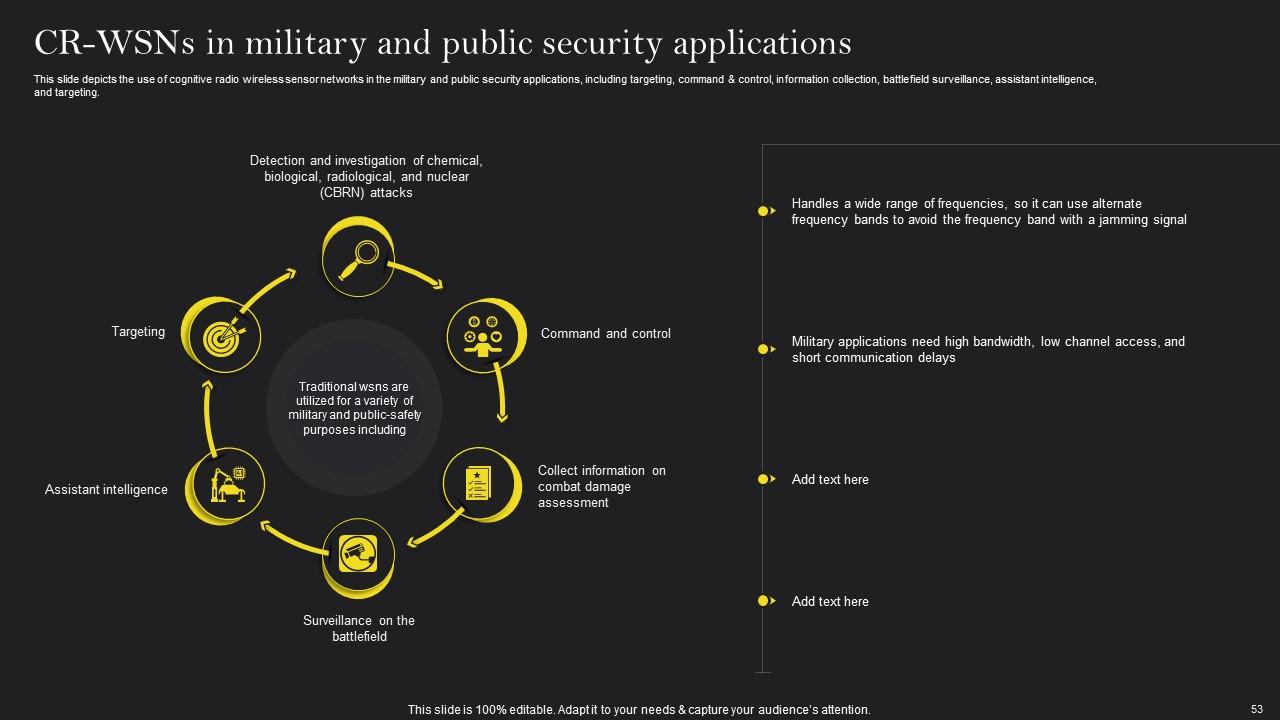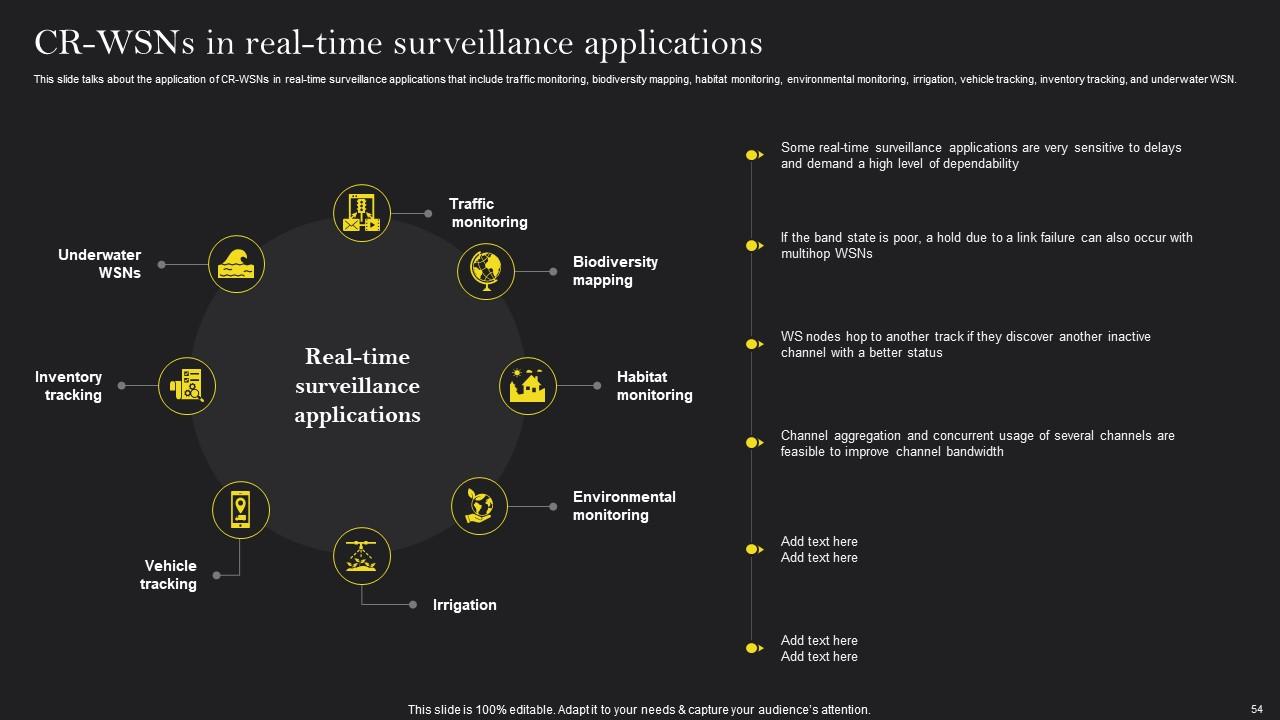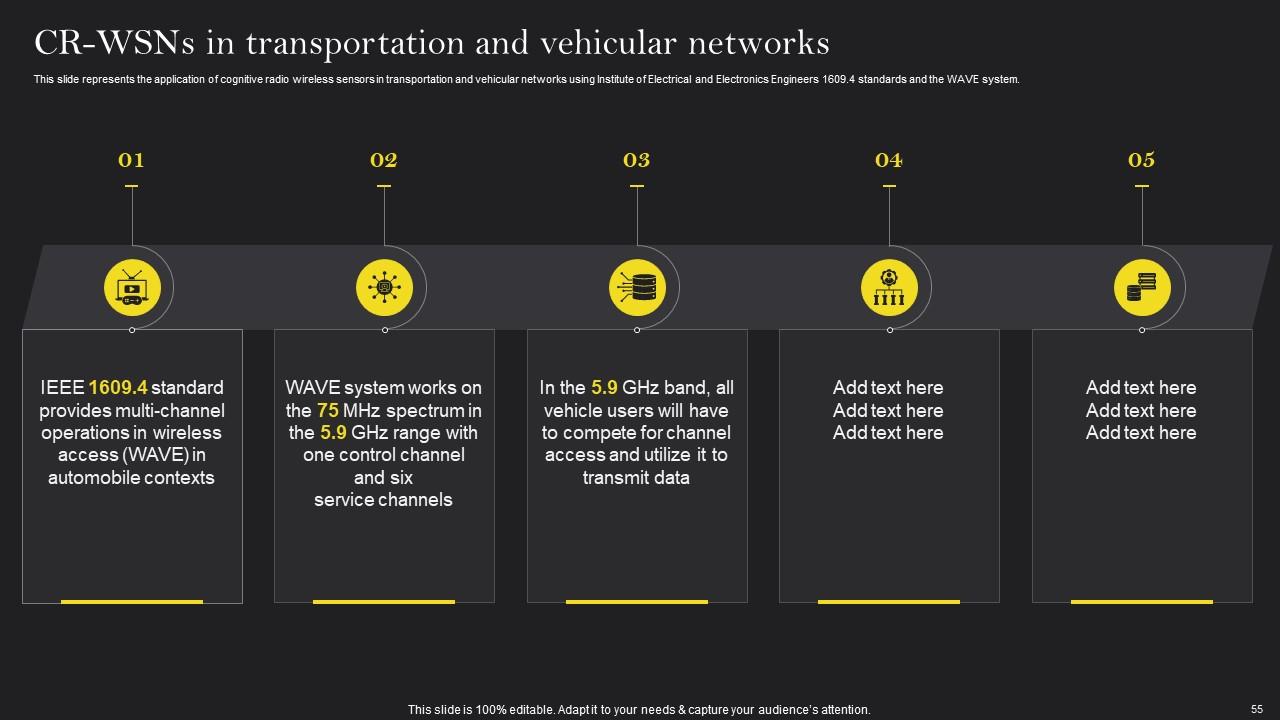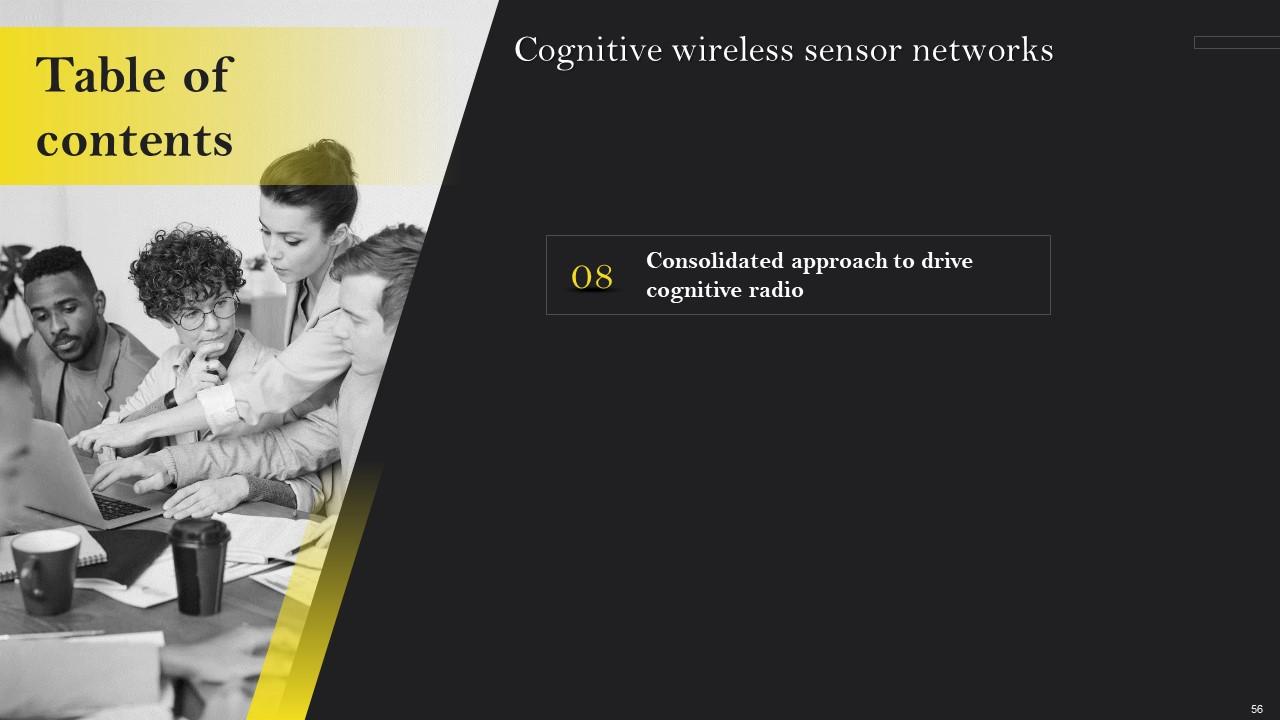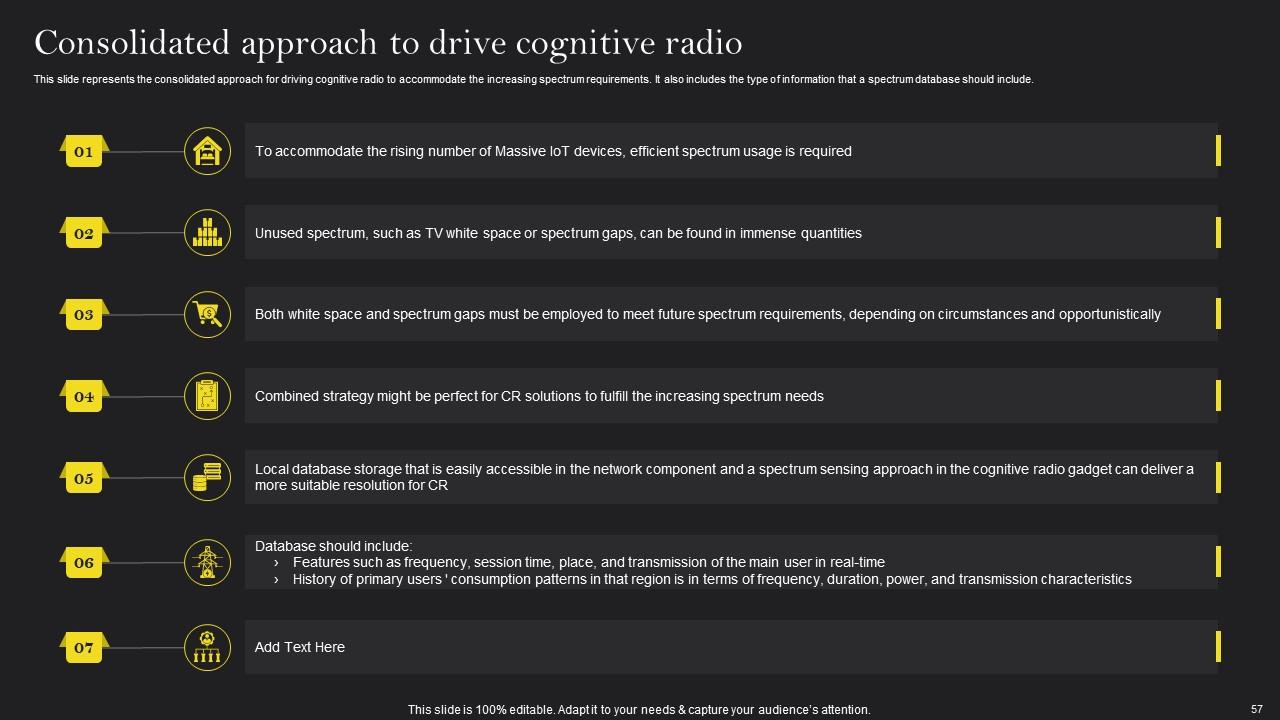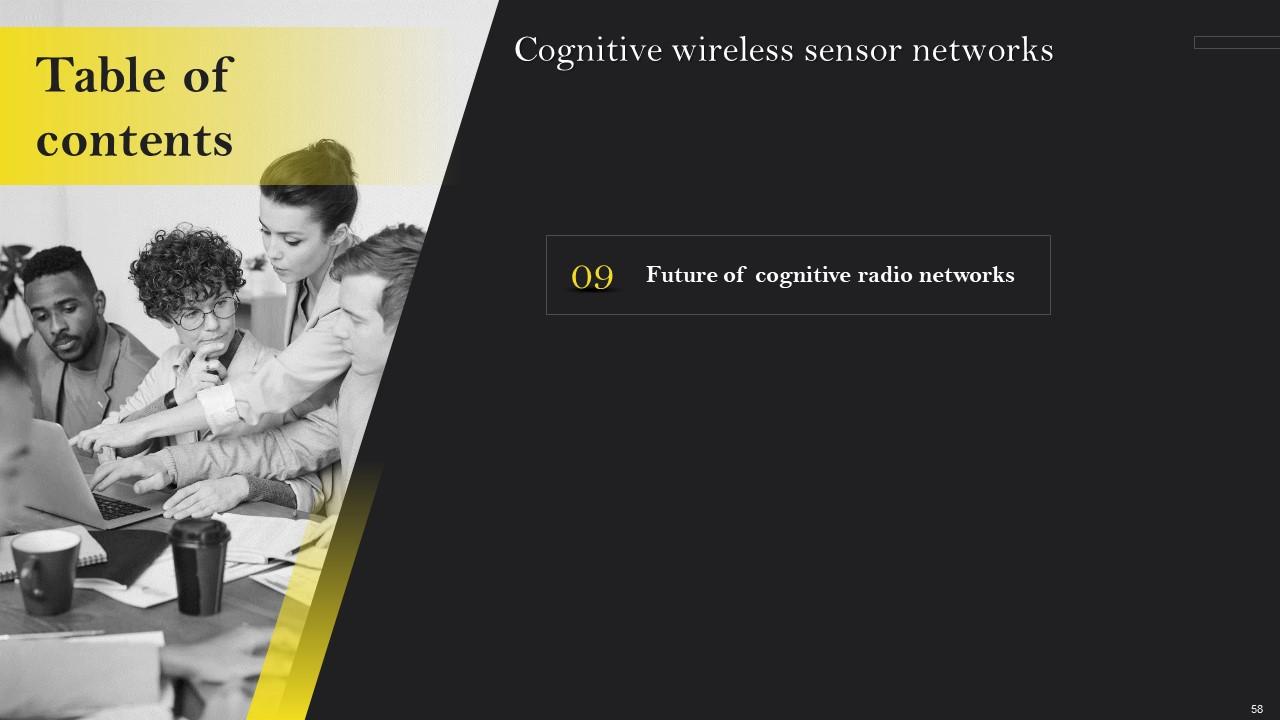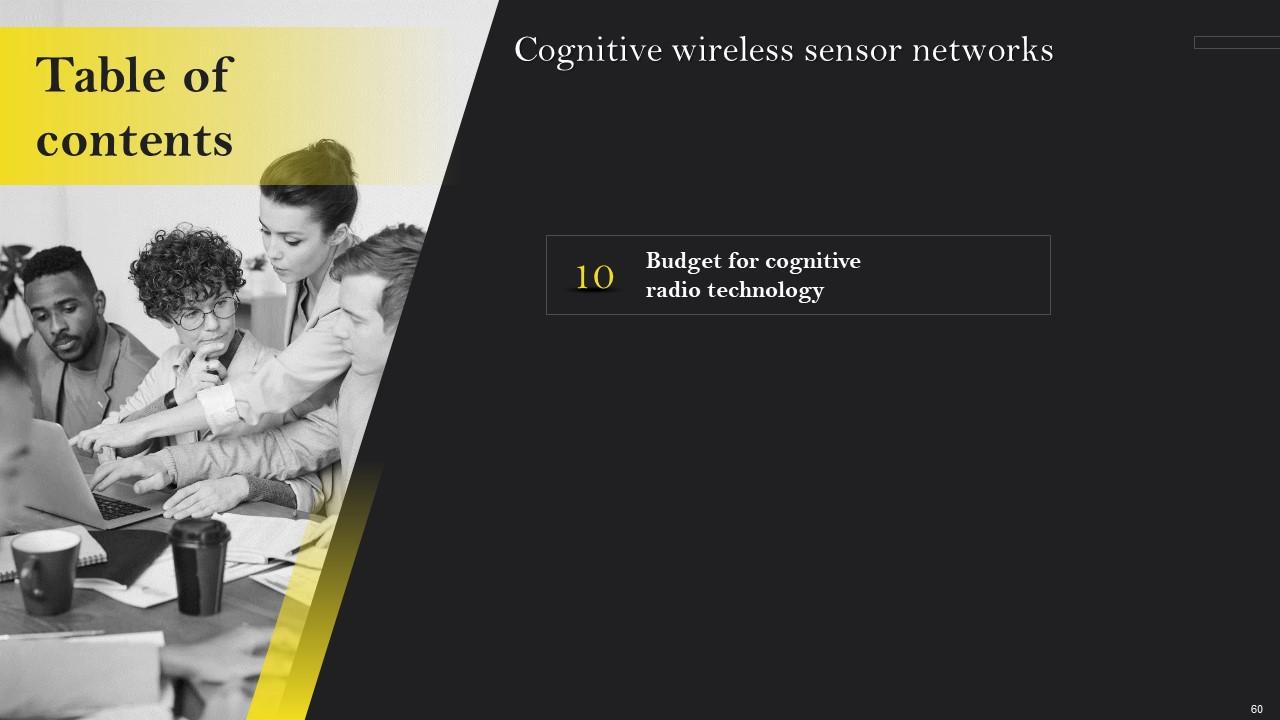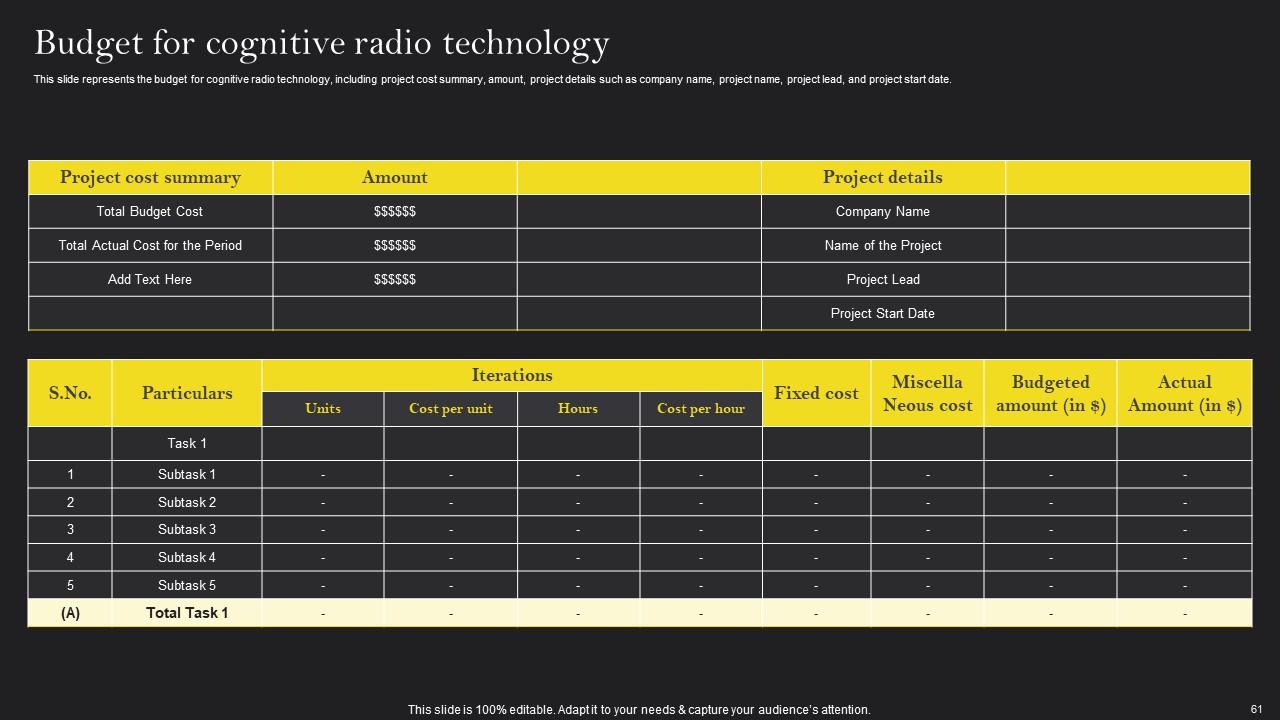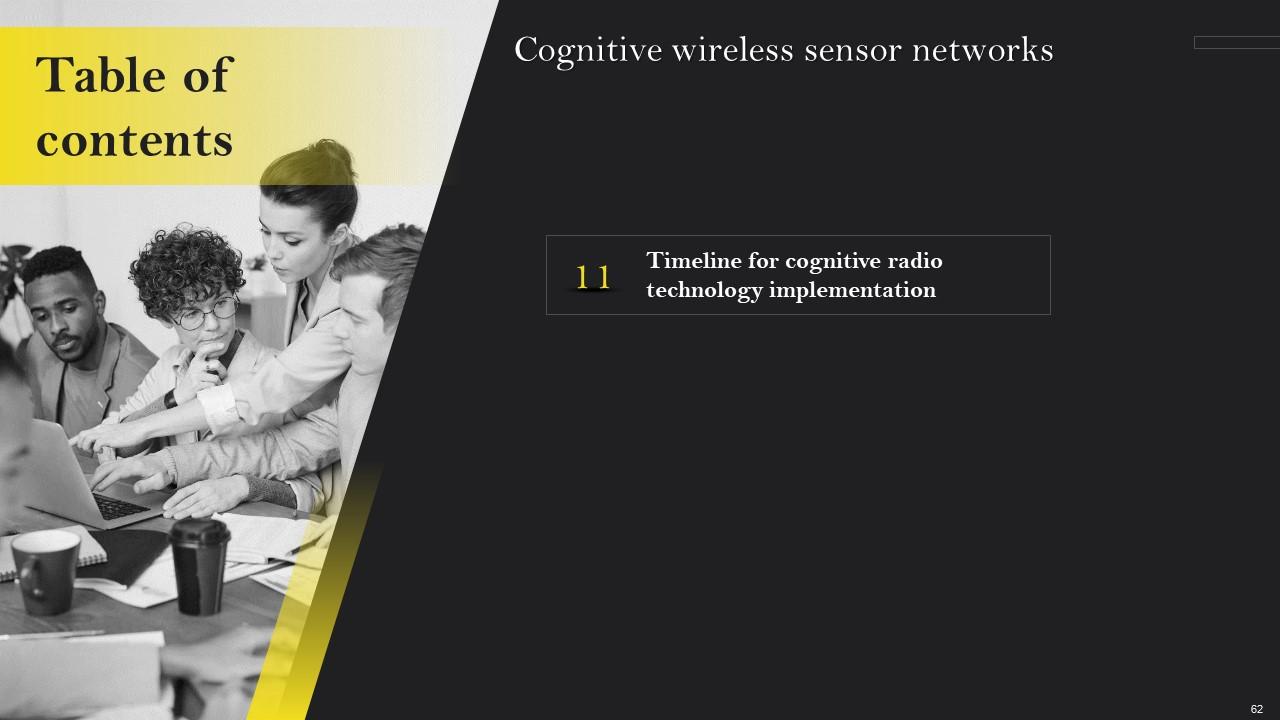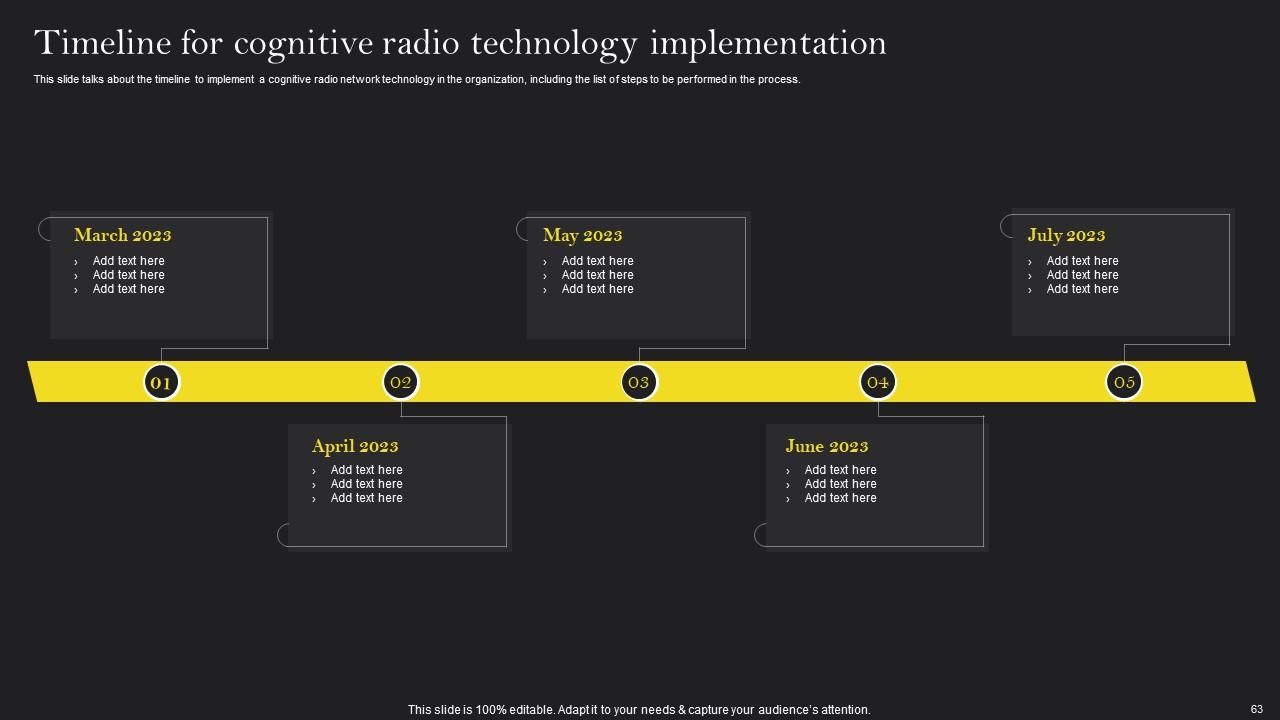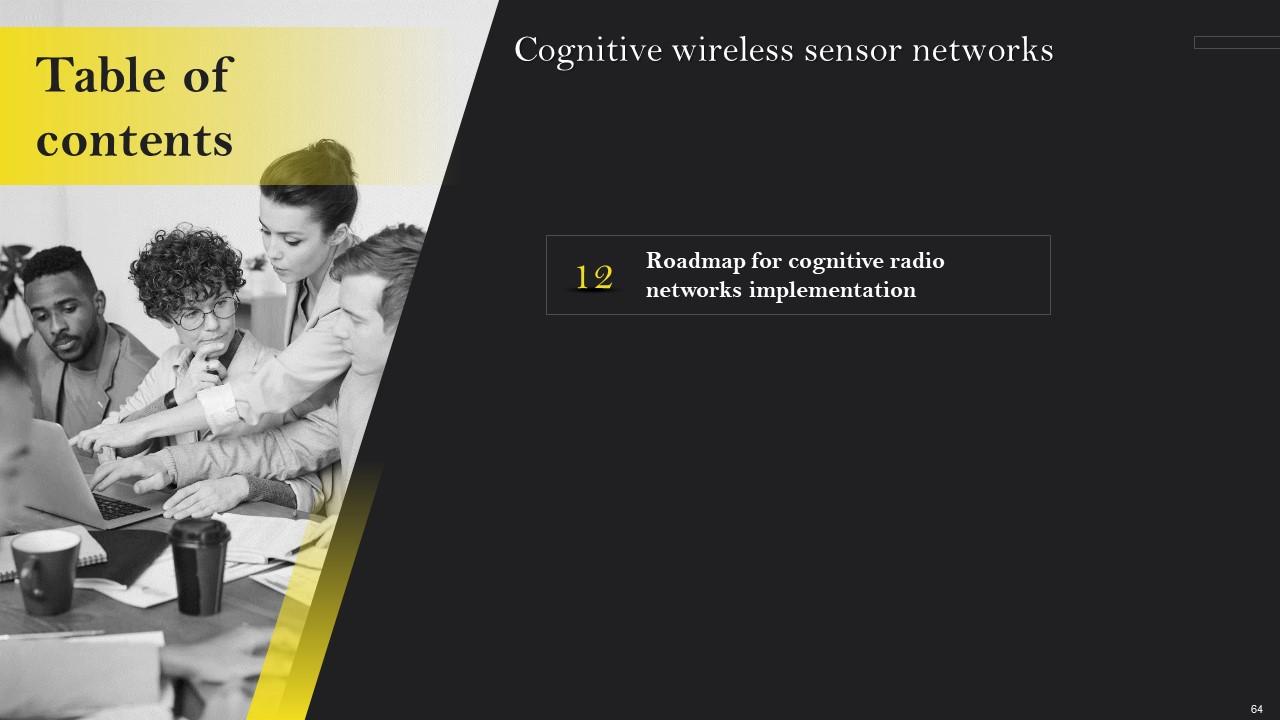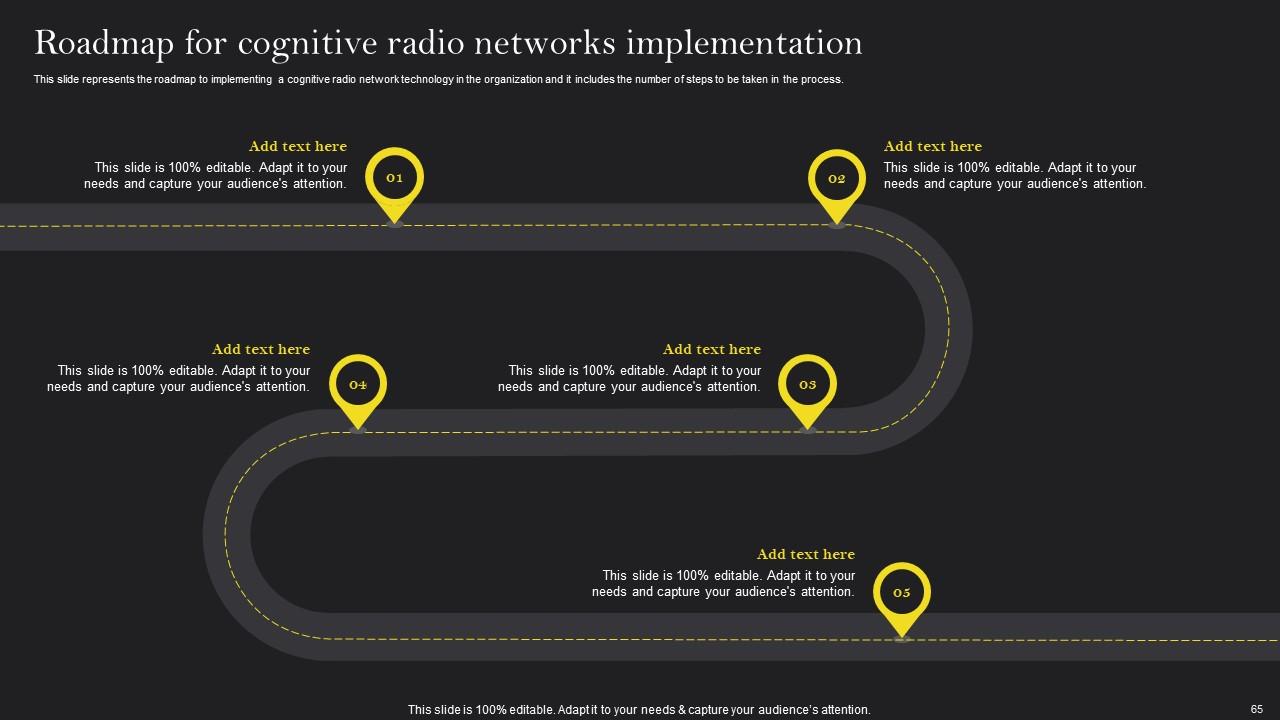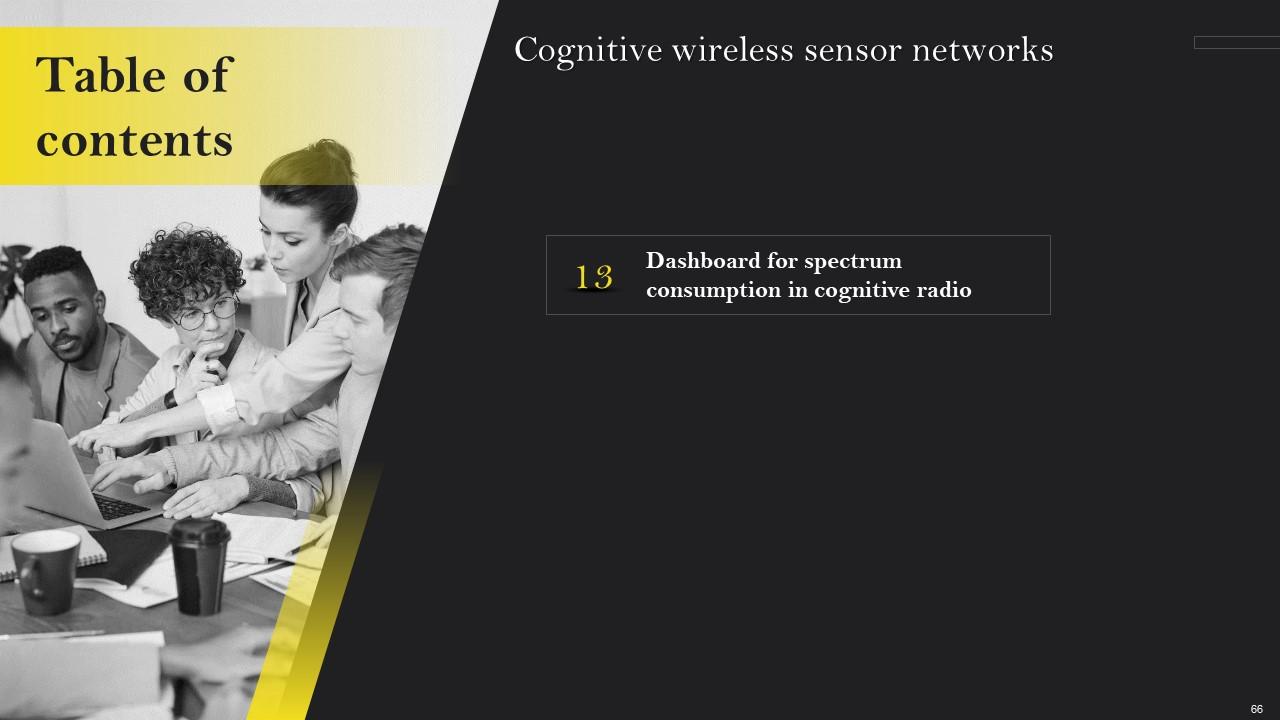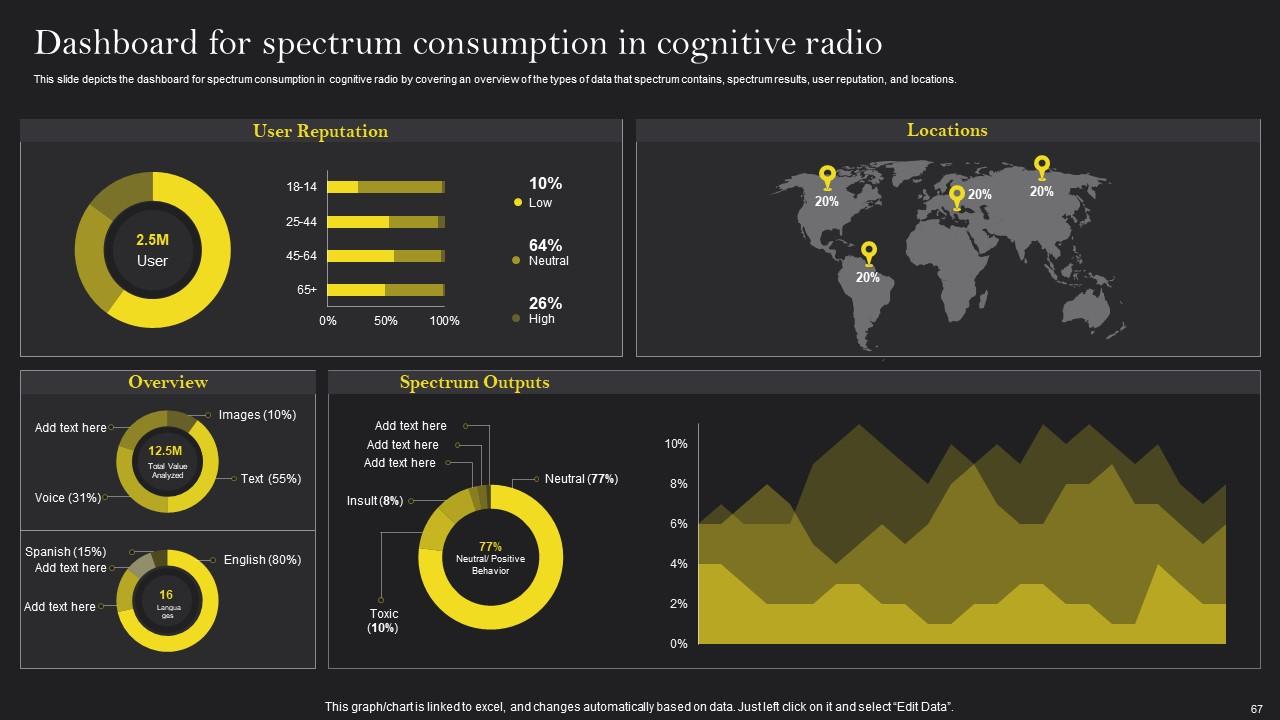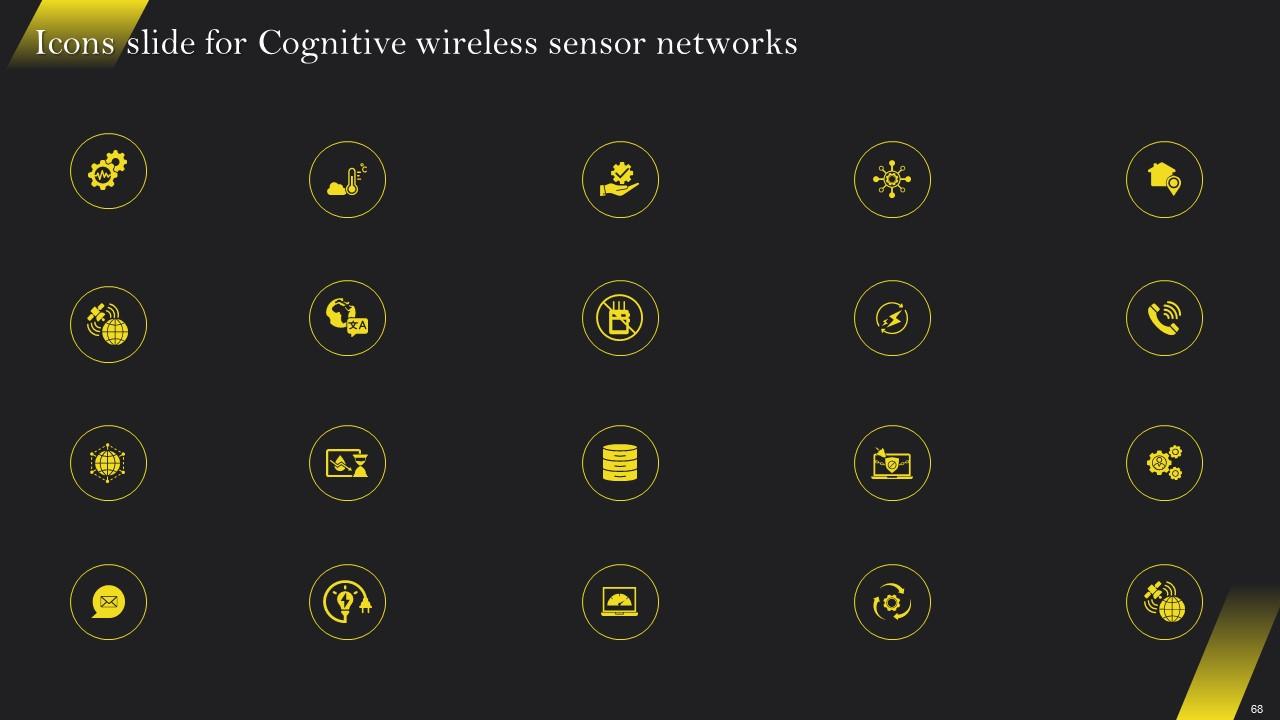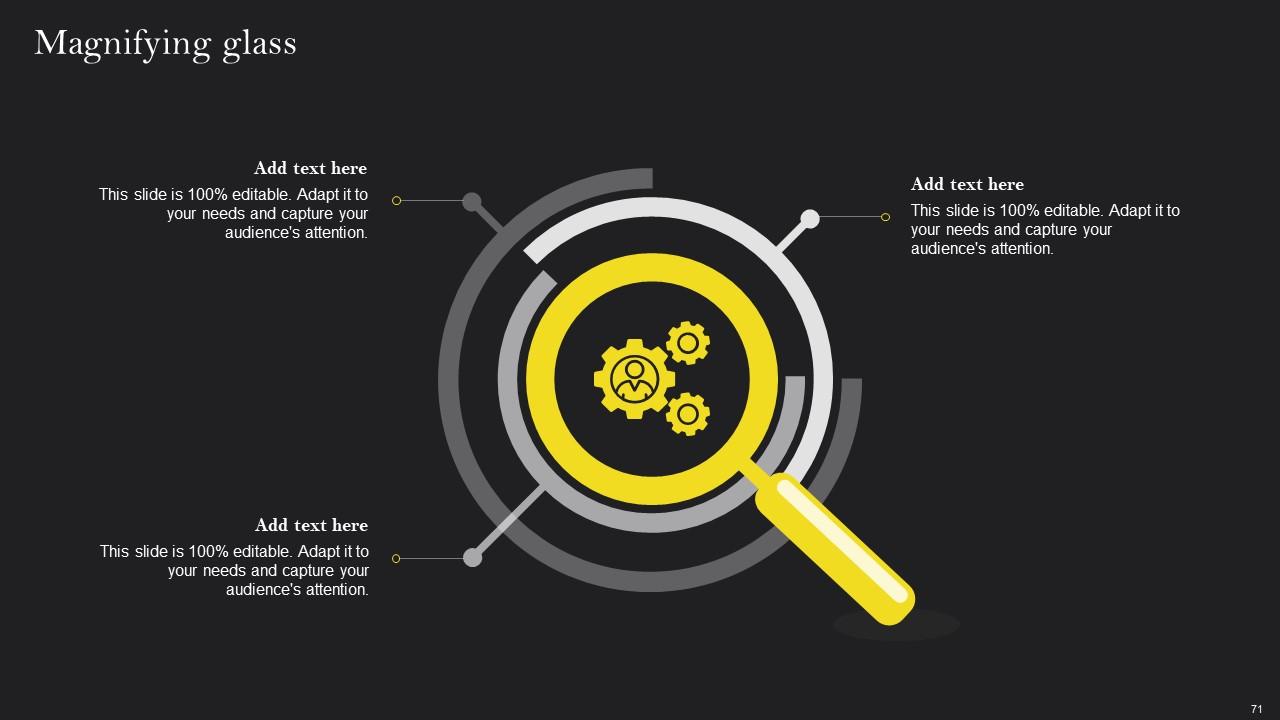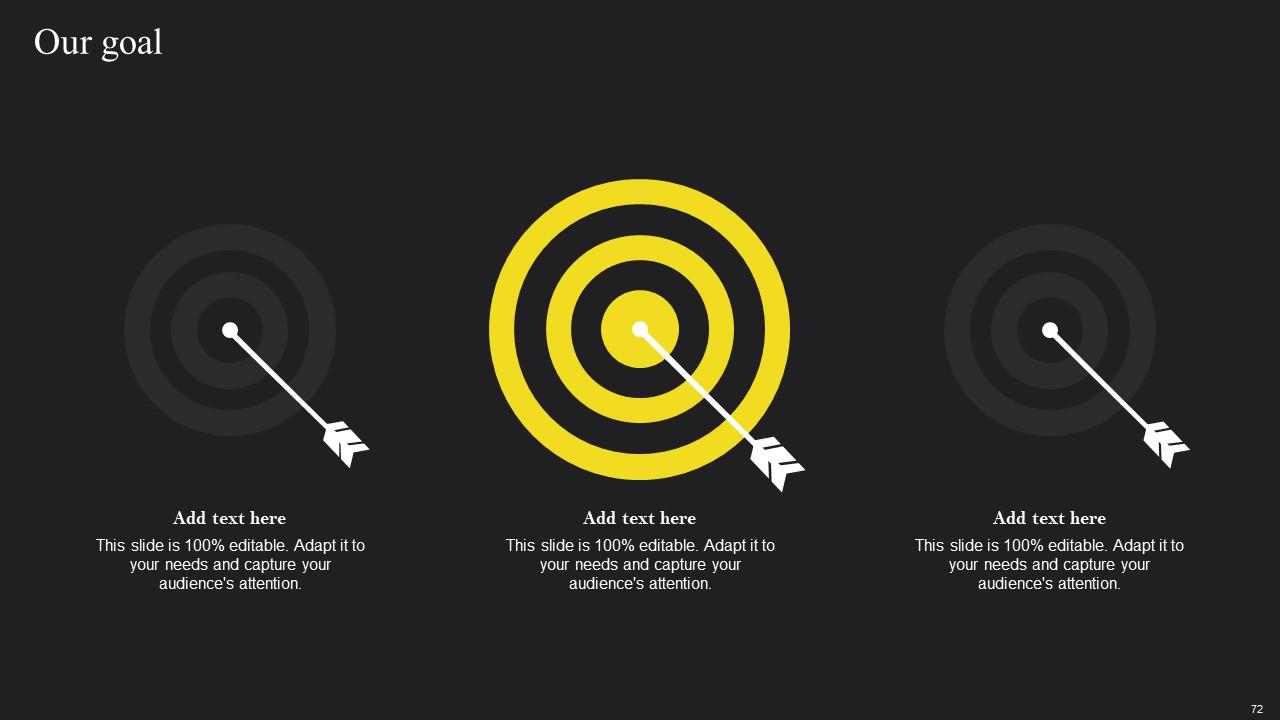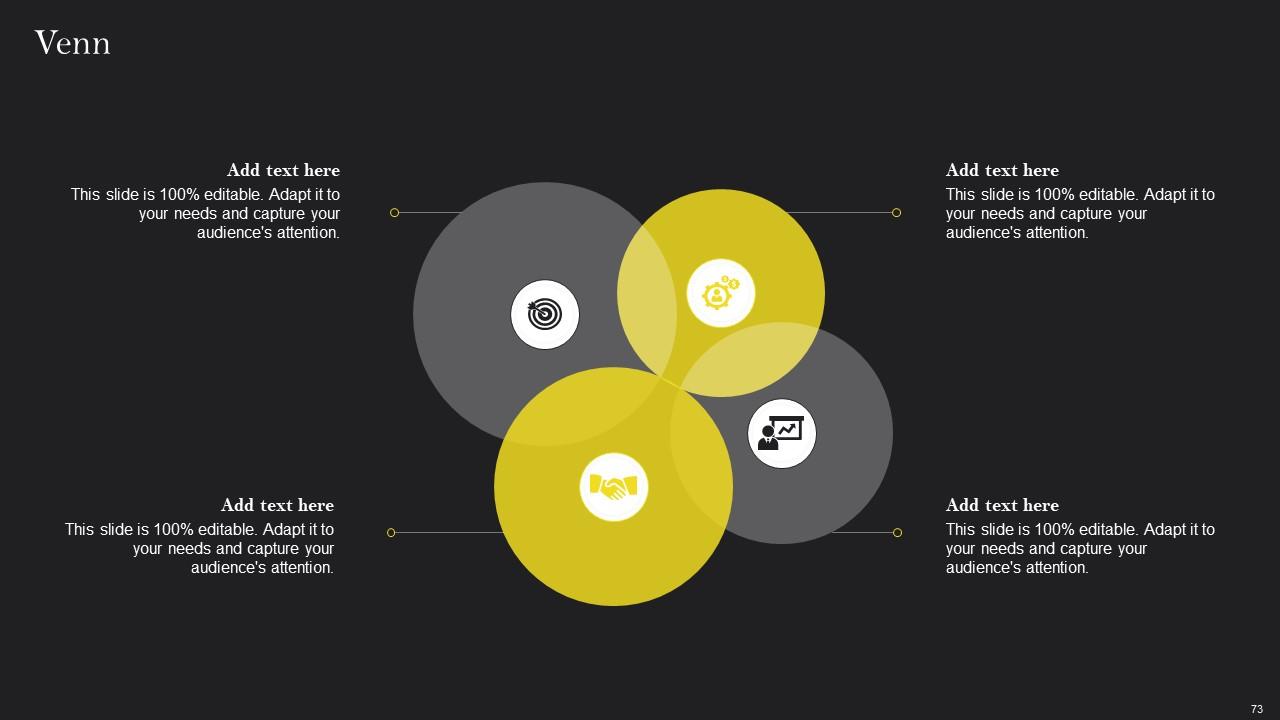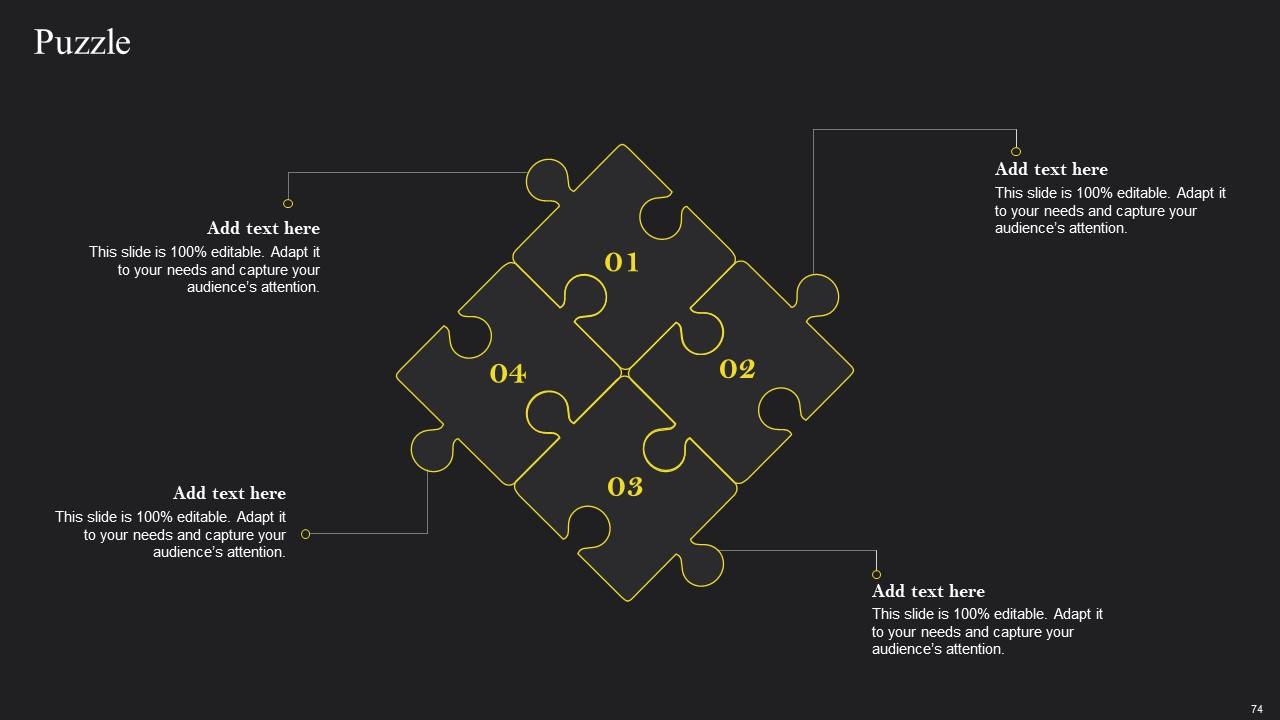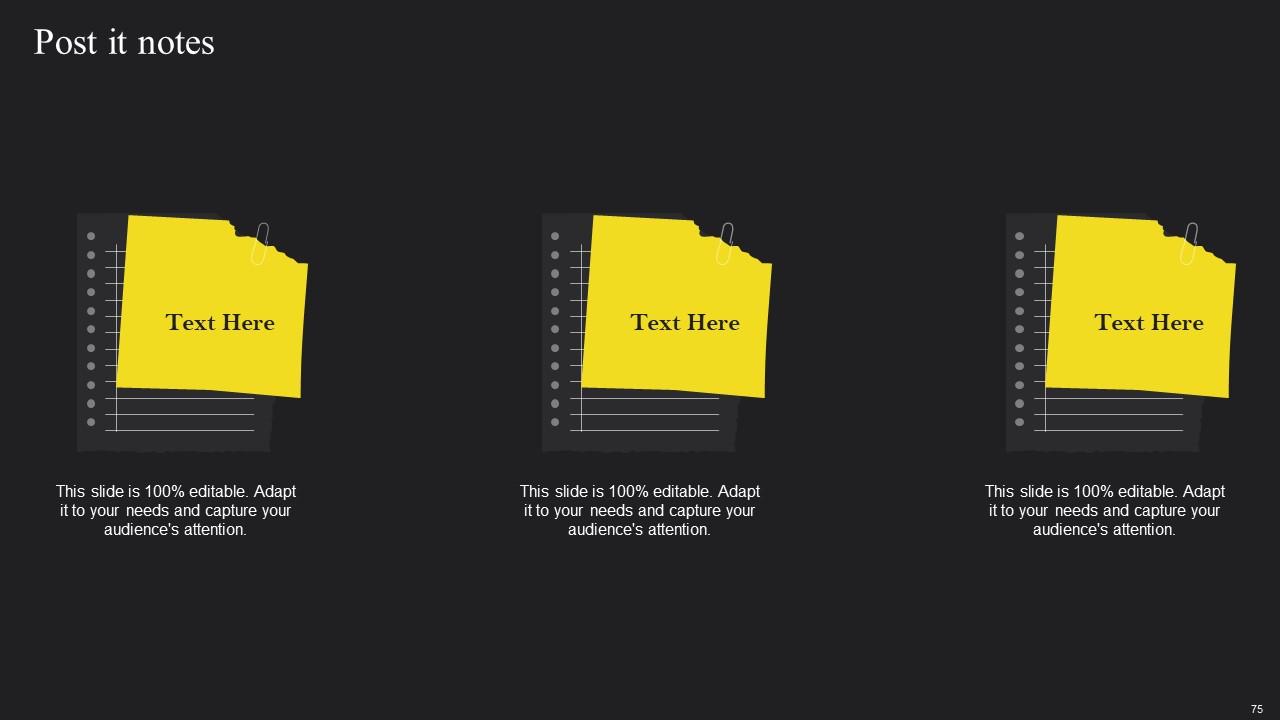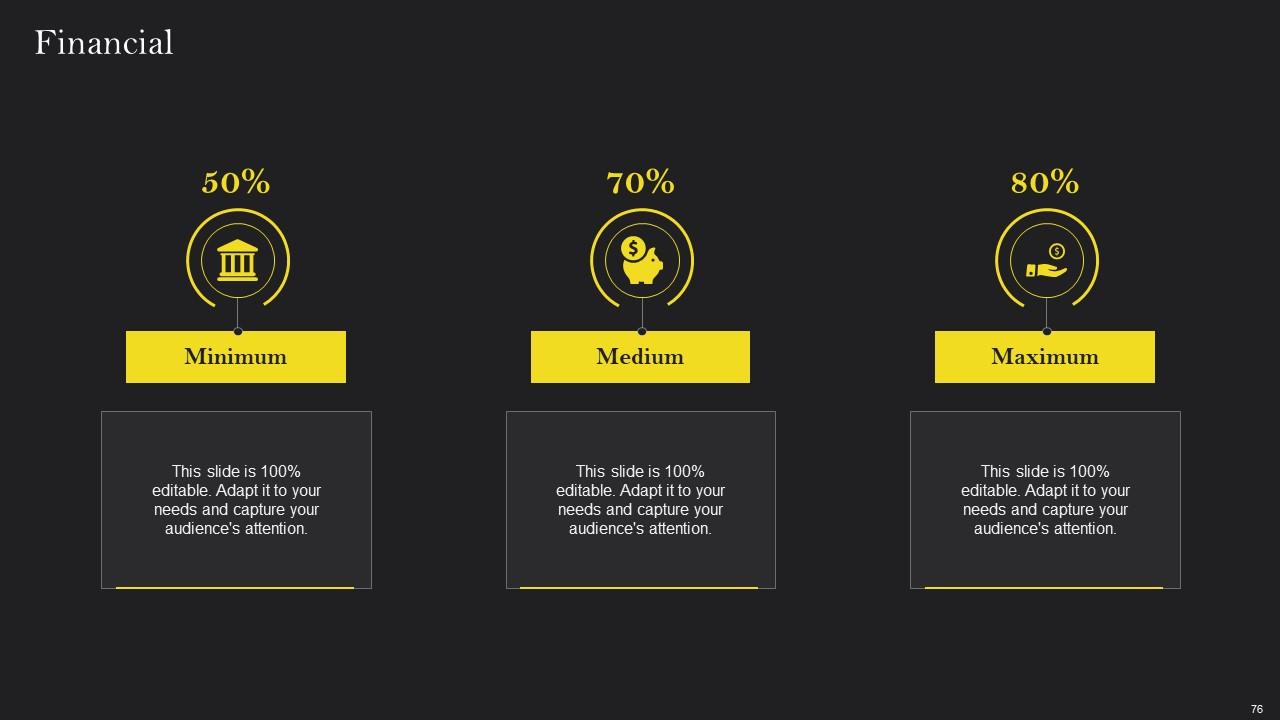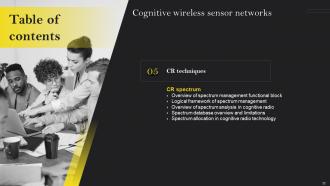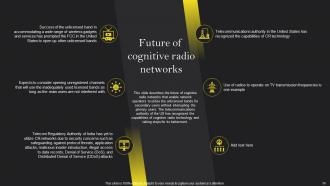Cognitive Wireless Sensor Networks Powerpoint Presentation Slides
Discover the potential of Cognitive Wireless Sensor Networks with our comprehensive PowerPoint presentation. This presentation highlights the limitations of conventional wireless sensor networks and how cognitive radio technology can overcome those challenges. It provides valuable insights into the global cognitive radio market size, market share by type, and factors driving market growth. The presentation offers a comprehensive overview of cognitive radio, including its introduction, importance, characteristics, types, and advantages. The architecture of cognitive radio is detailed, along with its working principles and functional blocks. The CR spectrum and spectrum management are also covered, encompassing logical frameworks, spectrum analysis, spectrum databases, and spectrum allocation. The presentation delves into spectrum sensing techniques, classification, signal processing, and cooperative sensing methods. Cognitive radio access paradigms, models, such as dynamic spectrum cognitive, interference temperature cognitive, and cognitive cooperation models, are also explained. The integration of cognitive radio with wireless sensor network systems and its applications in various domains are showcased. Finally, the presentation provides a consolidated approach for driving cognitive radio, including budget allocation, implementation timeline, roadmap, and a dashboard to monitor spectrum consumption. This template is fully editable and customizable, compatible with Google Slides. Do not miss this opportunity to enhance your understanding of cognitive wireless sensor networks. Download the template now.
Discover the potential of Cognitive Wireless Sensor Networks with our comprehensive PowerPoint presentation. This presentat..
- Google Slides is a new FREE Presentation software from Google.
- All our content is 100% compatible with Google Slides.
- Just download our designs, and upload them to Google Slides and they will work automatically.
- Amaze your audience with SlideTeam and Google Slides.
-
Want Changes to This PPT Slide? Check out our Presentation Design Services
- WideScreen Aspect ratio is becoming a very popular format. When you download this product, the downloaded ZIP will contain this product in both standard and widescreen format.
-

- Some older products that we have may only be in standard format, but they can easily be converted to widescreen.
- To do this, please open the SlideTeam product in Powerpoint, and go to
- Design ( On the top bar) -> Page Setup -> and select "On-screen Show (16:9)” in the drop down for "Slides Sized for".
- The slide or theme will change to widescreen, and all graphics will adjust automatically. You can similarly convert our content to any other desired screen aspect ratio.
Compatible With Google Slides

Get This In WideScreen
You must be logged in to download this presentation.
PowerPoint presentation slides
Deliver this complete deck to your team members and other collaborators. Encompassed with stylized slides presenting various concepts, this Cognitive Wireless Sensor Networks Powerpoint Presentation Slides is the best tool you can utilize. Personalize its content and graphics to make it unique and thought-provoking. All the seventy seven slides are editable and modifiable, so feel free to adjust them to your business setting. The font, color, and other components also come in an editable format making this PPT design the best choice for your next presentation. So, download now.
People who downloaded this PowerPoint presentation also viewed the following :
Content of this Powerpoint Presentation
Slide 1: This slide introduces Cognitive Wireless Sensor Networks (IT). State your company name and begin.
Slide 2: This slide depicts the Agenda of the presentation.
Slide 3: This slide shows Table of Content for the presentation.
Slide 4: This is yet another slide continuing the Table of Contents.
Slide 5: This slide highlights the Title for the Topics to be covered in the upcoming template.
Slide 6: This slide states the problems with conventional wireless sensor networks, such as the long wait time for delayed critical information and performance degradation.
Slide 7: This slide represents the cognitive radio solutions to overcome the conventional wireless sensor network problems and effectively use the unused spectrum to satisfy the rising requirements of information technology devices and gadgets.
Slide 8: This slide incorporates the Heading for the Contents to be discussed further.
Slide 9: This slide showcases the global market size of cognitive radio technology.
Slide 10: This slide gives an overview of the global cognitive radio market share by type.
Slide 11: This slide talks about the growth factors of the cognitive radio market, including increased demand for spectrum freedom, intelligent devices and goods, and services.
Slide 12: This slide exhibits the Title for the Ideas to be covered next.
Slide 13: This slide presents the introduction to the cognitive radio technology that helps to fully utilize the available spectrum by secondary users who do not have a spectrum license without interrupting the primary users.
Slide 14: This slide outlines how cognitive radio technology is essential to use the spectrum freely and effectively by both primary and secondary users.
Slide 15: This slide talks about the key characteristics of a cognitive radio network, and it includes operating environment sensing, operational state languages, and distributed resource management within a network.
Slide 16: This slide depicts the types of cognitive radio networks, such as heterogeneous and spectrum-sharing.
Slide 17: This slide highlights the advantages of cognitive radio technology that caters overcome radio spectrum scarcity, improved quality of service, avoiding intentional radio jamming scenarios, switching to power-saving protocol, and improving satellite communications.
Slide 18: This slide elucidates the Heading for the Components to be covered further.
Slide 19: This slide outlines a cognitive radio network architecture consisting of primary and secondary networks where licensed users use the primary network and unlicensed users use the secondary without interrupting each other.
Slide 20: This slide displays the working cycle of cognitive radio technology that fully utilizes the spectrum capacity by sharing the unused channels.
Slide 21: This slide represents the functional blocks of cognitive radio technology, including spectrum sensing, management, sharing, and mobility and functions of each block.
Slide 22: This slide incorporates the Title for the Topics to be covered in the forth-coming template.
Slide 23: This slide gives the overview of the spectrum management functional block that collects the best accessible spectrum to fulfill the secondary user’s requirements.
Slide 24: This slide talks about the logical framework of spectrum management.
Slide 25: This slide depicts the overview of spectrum analysis in cognitive radio technology, which is used to appropriately utilize unused spectrum by secondary users without interfering with each other.
Slide 26: This slide presents the overview and limitations of the spectrum database that is proposed by the FCC to simplify spectrum sensing and avoid traditional costly and time-consuming processes.
Slide 27: This slide shows the overview of spectrum allocation in cognitive radio technology.
Slide 28: This slide contains the Heading for the Ideas to be discussed further.
Slide 29: This slide represents the overview of the spectrum sensing cognitive radio technique that is used to detect if a part of the spectrum is free for use or not.
Slide 30: This slide potrays the classification of spectrum-sensing techniques, a technique that is used to detect if a part of the spectrum is free for use or not.
Slide 31: This slide mentions about the signal sensing techniques of spectrum-sensing, including its other categories such as matched filter detection, energy detection, and cyclo stationary feature detection technique.
Slide 32: This slide describes the cooperative sensing techniques of spectrum sensing and its sub-categories such as centralized spectrum sensing technique, decentralized cooperation method, and hybrid cooperation technique.
Slide 33: This slide represents the transmitter detection technique of spectrum-sensing.
Slide 34: This slide indicates the cooperative and non-cooperative limitations of spectrum sensing techniques.
Slide 35: This slide elucidates the Title for the Topics to be covered further.
Slide 36: This slide depicts the overview of the spectrum database technique for cognitive radio to simplify the spectrum sensing techniques and better utilize TV white space.
Slide 37: This slide consists of the Main Heading for the Components to be discussed next.
Slide 38: This slide represents the overview of three cognitive radio access paradigms such as underlay, overlay, and interweave.
Slide 39: This slide describes the comparison between different cognitive radio access paradigms.
Slide 40: This slide exhibits the Title for the Ideas to be covered in the following template.
Slide 41: This slide gives the overview of the initial cognitive radio cycle model, and its components are as follows – radio environment, receiver, and transmitter.
Slide 42: This slide illustrates the dynamic spectrum cognitive radio model, which assumes that primary users do not always utilize the spectrum.
Slide 43: This slide describes the interference temperature model of cognitive radio, which allows primary and secondary users to coexist on the same spectrum, but interference from secondary users to primary receivers should not exceed a certain level.
Slide 44: This slide presents the cognitive cooperation model of the CR network in which the capabilities of both primary and secondary users are pre-determined.
Slide 45: This slide incorporates the Heading for the Topics to be discussed next.
Slide 46: This slide represents the overview of cognitive radio wireless sensor networks, which comprise multiple energy-constrained, self-configuring, self-aware WS nodes and distributed wireless sensors with cognitive radio abilities.
Slide 47: This slide deals with Adopting cognitive radio method in WSN.
Slide 48: This slide exhibits the Advantages of using cognitive radio network in WSNS.
Slide 49: This slide focuses on the Title for the Topics to be covered further.
Slide 50: This slide talks about how the application of cognitive radio wireless network systems in the healthcare department is advancing the medical field.
Slide 51: This slide reveals the use of CR-WSNs in home appliances and indoor applications such as smart buildings, home monitoring systems, factory automation, and personal entertainment and other indoor WSN application.
Slide 52: This slide focuses on CR-WSNs in bandwidth-intensive applications.
Slide 53: This slide depicts the use of cognitive radio wireless sensor networks in the military and public security applications.
Slide 54: This slide talks about the application of CR-WSNs in real-time surveillance applications that include traffic monitoring, biodiversity mapping, etc.
Slide 55: This slide illustrates the application of cognitive radio wireless sensors in transportation and vehicular networks using Institute of Electrical and Electronics Engineers 1609.4 standards and the WAVE system.
Slide 56: This slide contains the Heading for the Ideas to be covered further.
Slide 57: This slide represents the consolidated approach for driving cognitive radio to accommodate the increasing spectrum requirements.
Slide 58: This slide indicates the Title for the Topics to be covered further.
Slide 59: This slide describes the future of cognitive radio networks that enable network operators to utilize the unlicensed bands for secondary users without interrupting the primary users.
Slide 60: This sldie showcases the Heading for the Ideas to be covered next.
Slide 61: This slide represents the budget for cognitive radio technology, including project cost summary, amount, and project details.
Slide 62: This slide showcases the Title for the Topics to be discussed next.
Slide 63: This slide talks about the timeline to implement a cognitive radio network technology in the organization, including the list of steps to be performed in the process.
Slide 64: This slide incorporates the Heading for the Components to be covered further.
Slide 65: This slide illustrates the Company's Roadmap for cognitive radio networks implementation.
Slide 66: This slide highlights the Title for the Ideas to be discussed in the upcoming template.
Slide 67: This slide depicts the dashboard for spectrum consumption in cognitive radio by covering an overview of the types of data that spectrum contains, spectrum results, user reputation, and locations.
Slide 68: This slide contains all the icons used in this presentation.
Slide 69: This slide is titled as Additional Slides for moving forward.
Slide 70: This is Our Team slide with names and designation.
Slide 71: This slide showcases Magnifying Glass to highlight information, specifications etc
Slide 72: This is Our Goal slide. State your firm's goals here.
Slide 73: This slide depicts Venn diagram with text boxes.
Slide 74: This slide contains Puzzle with related icons and text.
Slide 75: This slide shows Post It Notes. Post your important notes here.
Slide 76: This is a Financial slide. Show your finance related stuff here.
Slide 77: This is a Thank You slide with address, contact numbers and email address.
Cognitive Wireless Sensor Networks Powerpoint Presentation Slides with all 82 slides:
Use our Cognitive Wireless Sensor Networks Powerpoint Presentation Slides to effectively help you save your valuable time. They are readymade to fit into any presentation structure.
FAQs
Cognitive radio technology is a wireless communication technology that allows secondary users to effectively utilize unused spectrum without interfering with primary users. It is important because it helps overcome spectrum scarcity, improves spectrum utilization, and enables efficient and intelligent use of wireless resources.
Cognitive radio technology offers several advantages, including overcoming radio spectrum scarcity, improved quality of service, avoiding intentional radio jamming scenarios, switching to power-saving protocols, and enhancing satellite communications. It also enables better spectrum management, increased spectrum utilization, and improved flexibility in wireless networks.
The key characteristics of a cognitive radio network include operating environment sensing, operational state languages, and distributed resource management. Sensing allows the network to detect and adapt to the wireless environment, operational state languages enable communication and coordination between devices, and distributed resource management optimizes resource allocation and utilization.
Cognitive radio networks can be classified into heterogeneous and spectrum-sharing networks. Heterogeneous networks consist of different types of devices and networks, while spectrum-sharing networks enable both licensed and unlicensed users to share spectrum resources without interference.
Cognitive radio technology has various applications across industries. It can be used in healthcare for medical advancements, in home appliances for smart buildings and automation, in military and public security applications, in real-time surveillance, and in transportation and vehicular networks. It enables efficient spectrum utilization and enhances wireless communication in these domains.
-
“I really like the convenient operation and professionalism I saw on the SlideTeam website. I want to express my regards and appreciation to the team.”
-
They helped us design the pamphlets for our church’s food drive! The people loved the design, and I’m happy to say it was successful. Thank you, SlideTeam!


